Vintage dining room design celebrates the charm and character of past eras by blending antique furnishings, curated thrift finds, and era-specific details to create spaces that feel both nostalgic and lived-in. From distressed wood tables to opaline glass pendants, these ideas draw on a range of styles—Victorian elegance, midcentury modern simplicity, farmhouse warmth, and retro vibrancy—to craft rooms that tell a story through every piece. Incorporating both high-end antiques and budget-friendly thrifted treasures ensures a personalized space rich in texture, color, and history. Below are 20 detailed vintage dining room ideas to inspire your own timeless retreat.
1. Embrace Distressed Wood Furniture
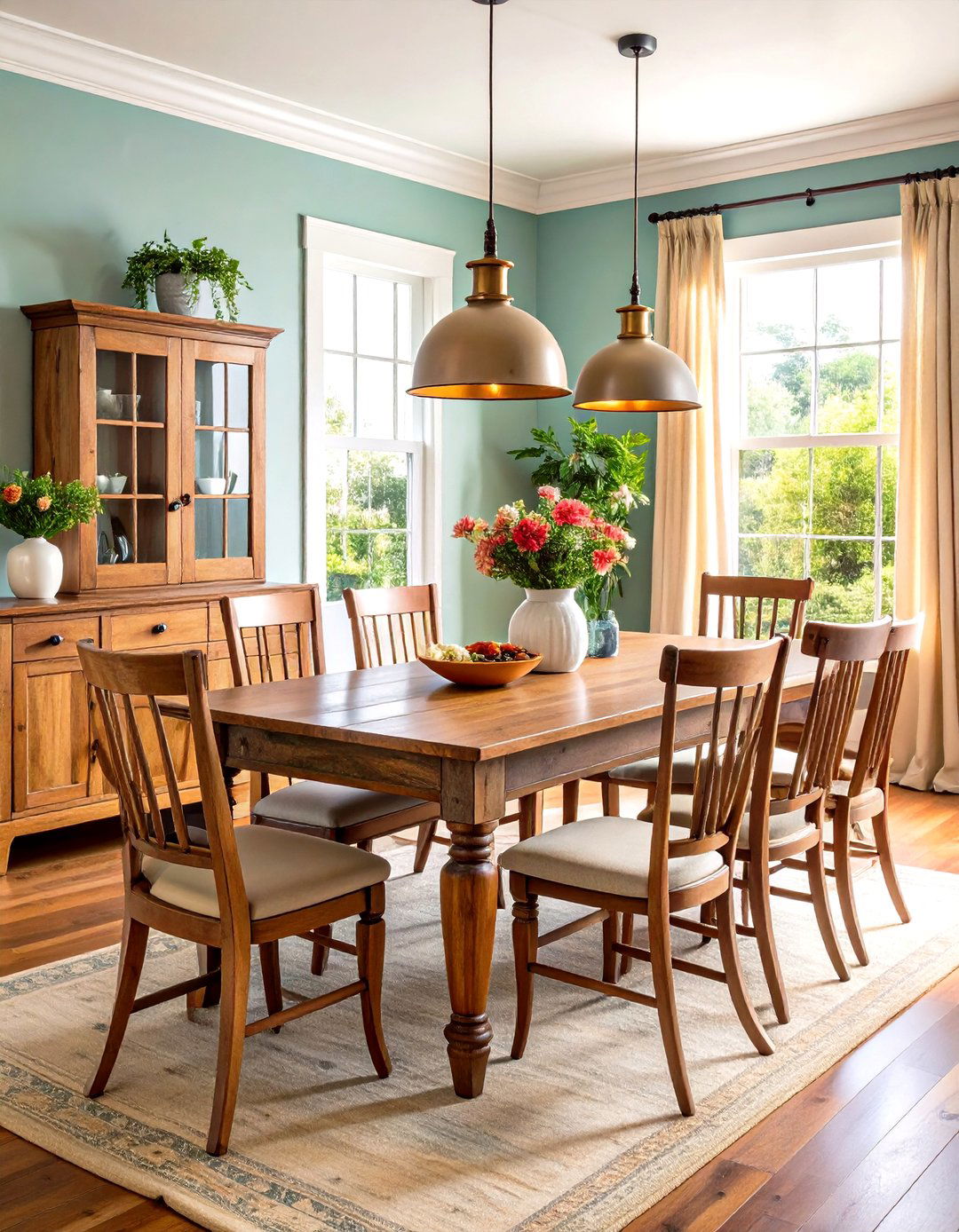
Distressed wood dining tables and sideboards instantly evoke a sense of history and timeworn charm, making them staples in vintage dining room design. Opt for pieces with natural patina, knots, and visible grain to showcase authenticity. To highlight their rustic beauty, pair them with simple seating—like Windsor chairs or metal bistro stools—that won’t compete with the table’s character. A distressed sideboard can double as storage for linens and serveware, while its weathered finish anchors the room’s aesthetic. Balance the worn-look wood with soft textiles—such as linen runners or velvet cushions—to prevent the space from feeling too heavy or dark. Finally, maintain a cohesive palette by echoing wood tones in smaller accent pieces like frames or candle holders.
2. Add Ornate Victorian Details
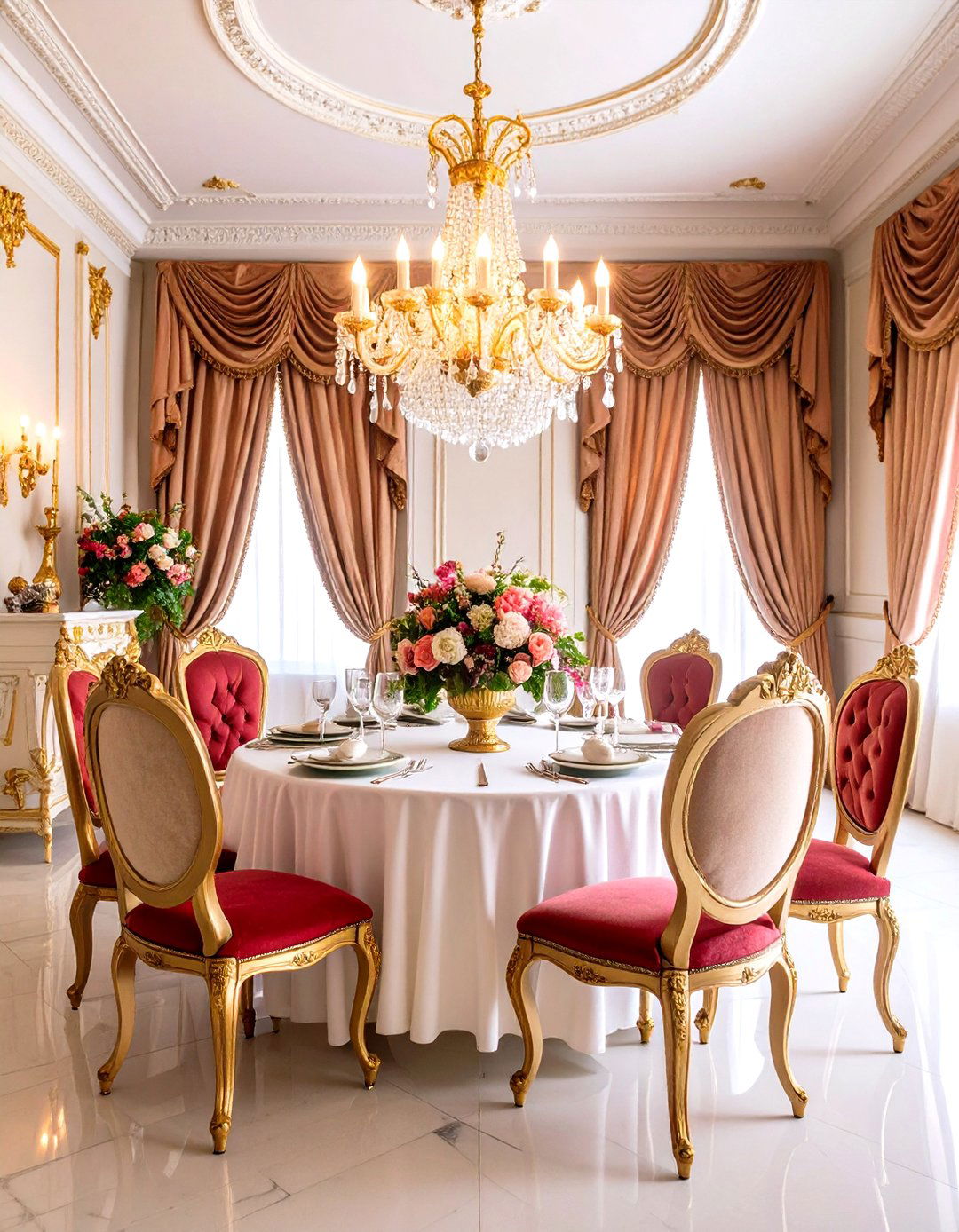
Incorporate ornate crown moldings, wainscoting, and tufted dining chairs to channel the opulence of Victorian-era design. Seek out antique or reproduction chairs upholstered in rich fabrics—velvet or damask—in deep jewel tones for an authentic period feel. Complement these with crystal or brass chandeliers featuring intricate scrollwork. To complete the look, install decorative ceiling medallions and use wallpaper with subtle damask or floral patterns on the walls. Balance the grandeur by keeping table settings minimal: crisp white china, polished silverware, and a simple floral centerpiece allow the room’s architectural details to shine without overwhelming the eye.
3. Feature Opaline Glass Pendant Lighting
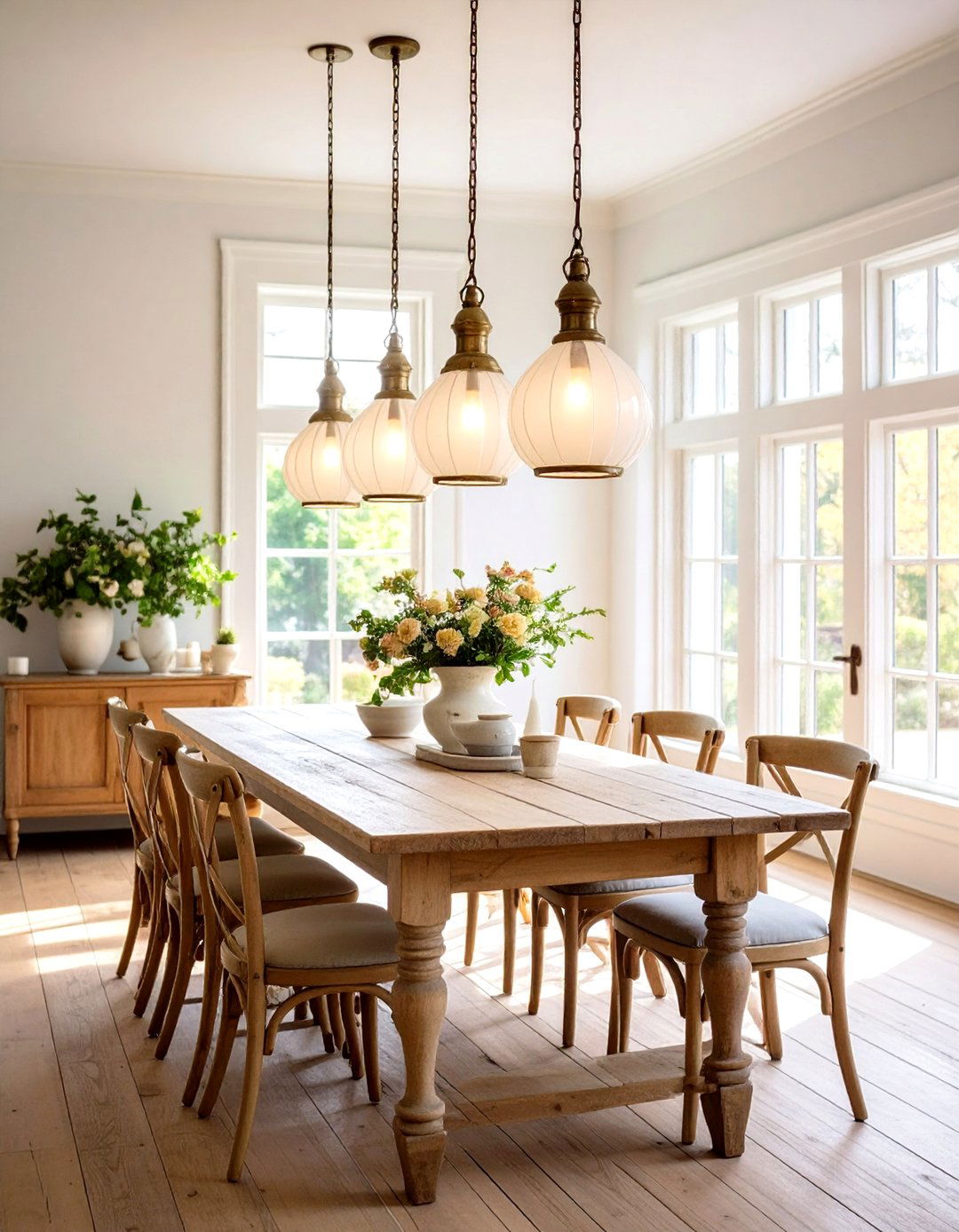
Antique opaline glass pendant lights, known for their milky white glow and soft diffusion, are a classic vintage touch that suits a variety of décor styles. These pendants work beautifully over a dining table, creating a focal point that feels both elegant and nostalgic. Pair one large opaline fixture with a distressed wood table to blend farmhouse and vintage glamour, or use multiple smaller pendants in a row for midcentury-inspired symmetry. When selecting hardware, choose patinated brass or wrought iron to reinforce the antique aesthetic. Finally, dimmable wiring ensures the lighting can transition from bright family dinners to intimate gatherings seamlessly.
4. Incorporate Midcentury Modern Pieces
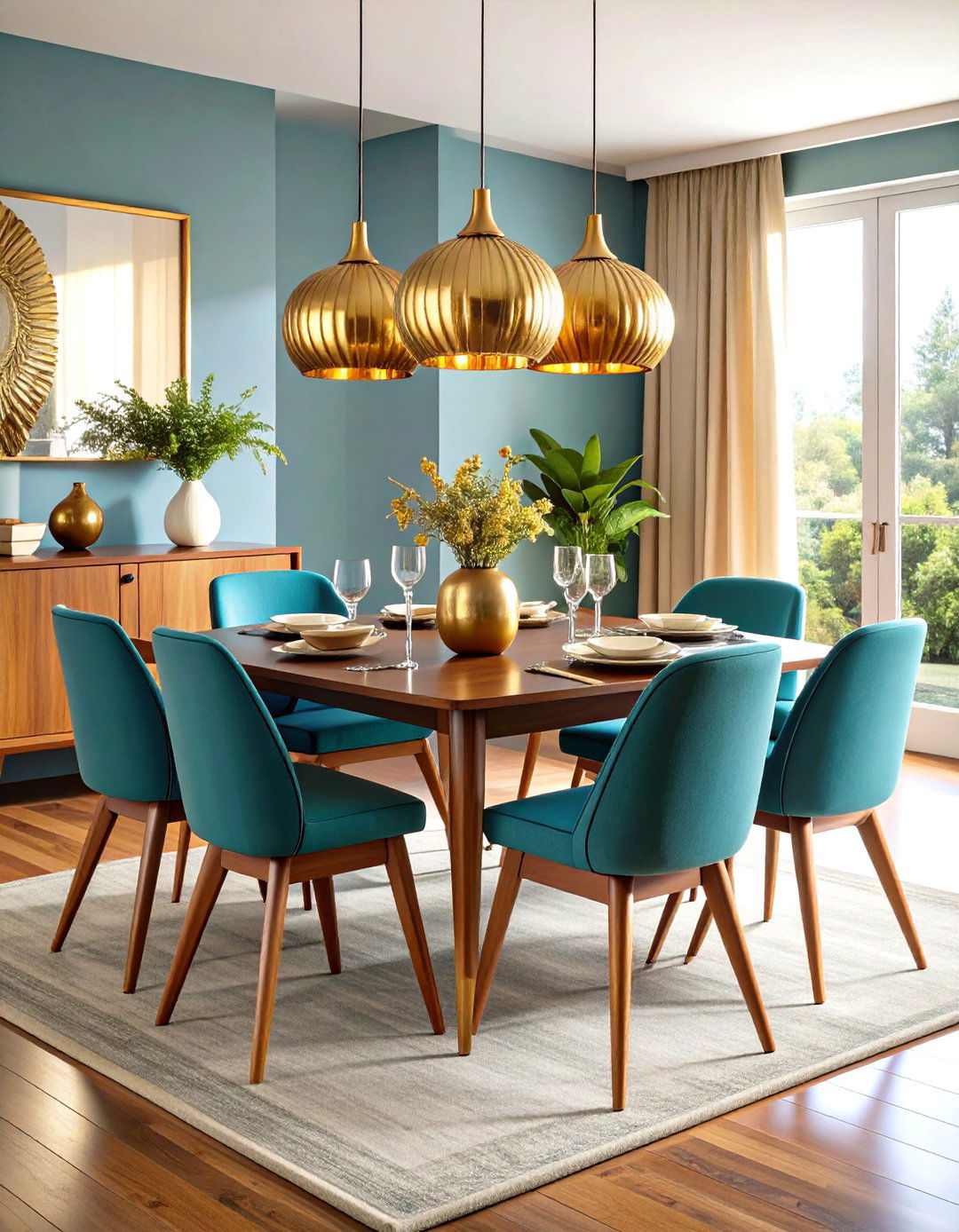
Midcentury modern furniture—distinguished by clean lines, organic curves, and warm wood tones—provides a sleek counterpoint to more ornate vintage elements. A walnut dining table with tapered legs or a set of molded chairs can anchor the space in 1950s style. To emphasize contrast, surround these pieces with antique accents such as a brass-framed mirror or a retro sideboard. Midcentury lighting fixtures—think Danish pendants or Sputnik chandeliers—add graphic interest. This eclectic approach marries functionality with history, ensuring the room feels curated rather than dated.
5. Implement Farmhouse Bench Seating
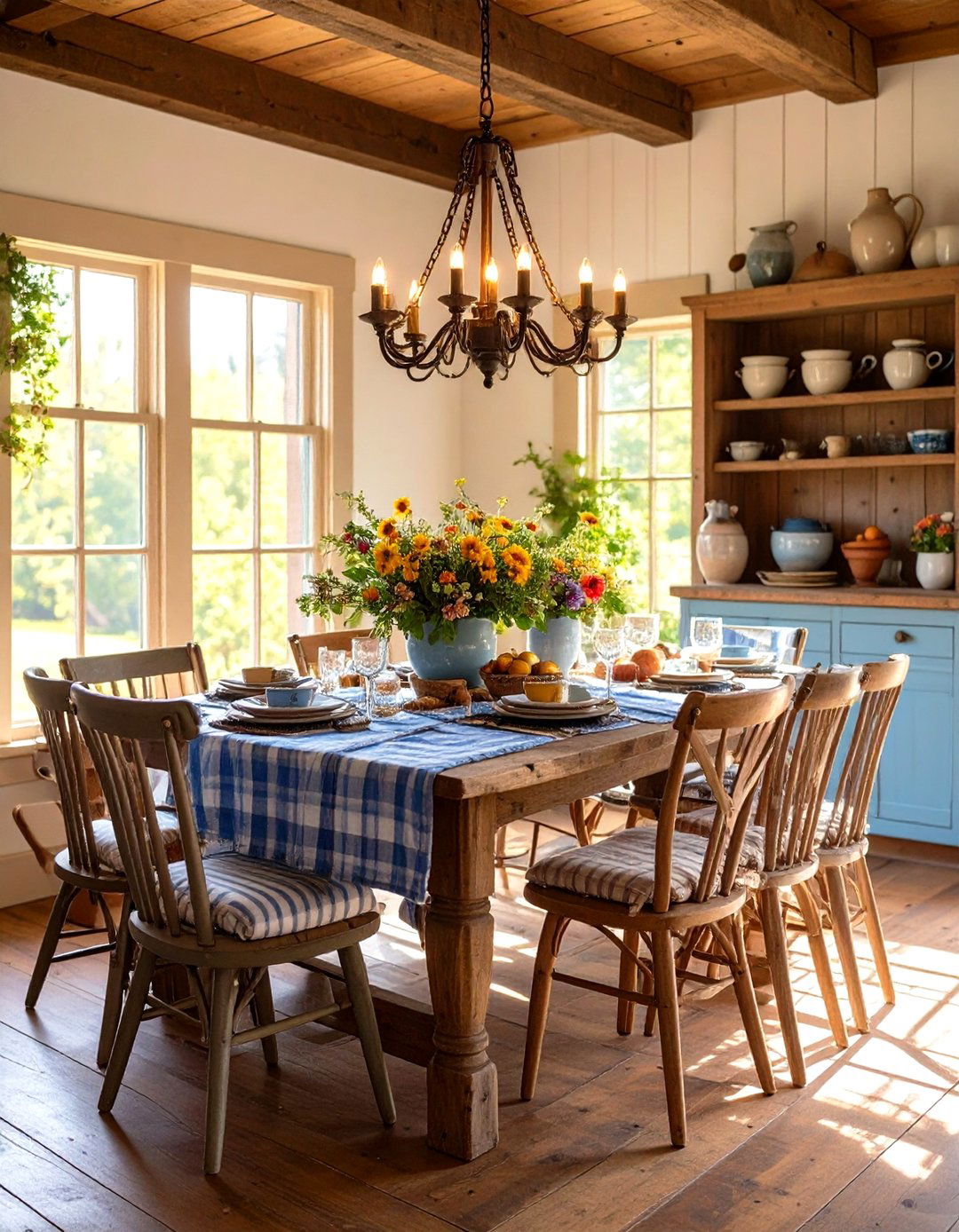
A vintage-inspired farmhouse bench not only maximizes seating but also injects casual warmth into your dining area. Look for benches crafted from reclaimed wood or painted in distressed white, then pair them with mismatched chairs at the table ends for an informal look. To soften the bench, add seat cushions in ticking stripes or floral prints reminiscent of early-20th-century fabrics. Above, hang a simple wrought-iron chandelier or a cluster of vintage lanterns to complement the rustic seating. Incorporate open shelving on a nearby wall to display ceramic pitchers and wooden cutting boards, reinforcing the farmhouse vibe.
6. Display Vintage Plate Wall Art
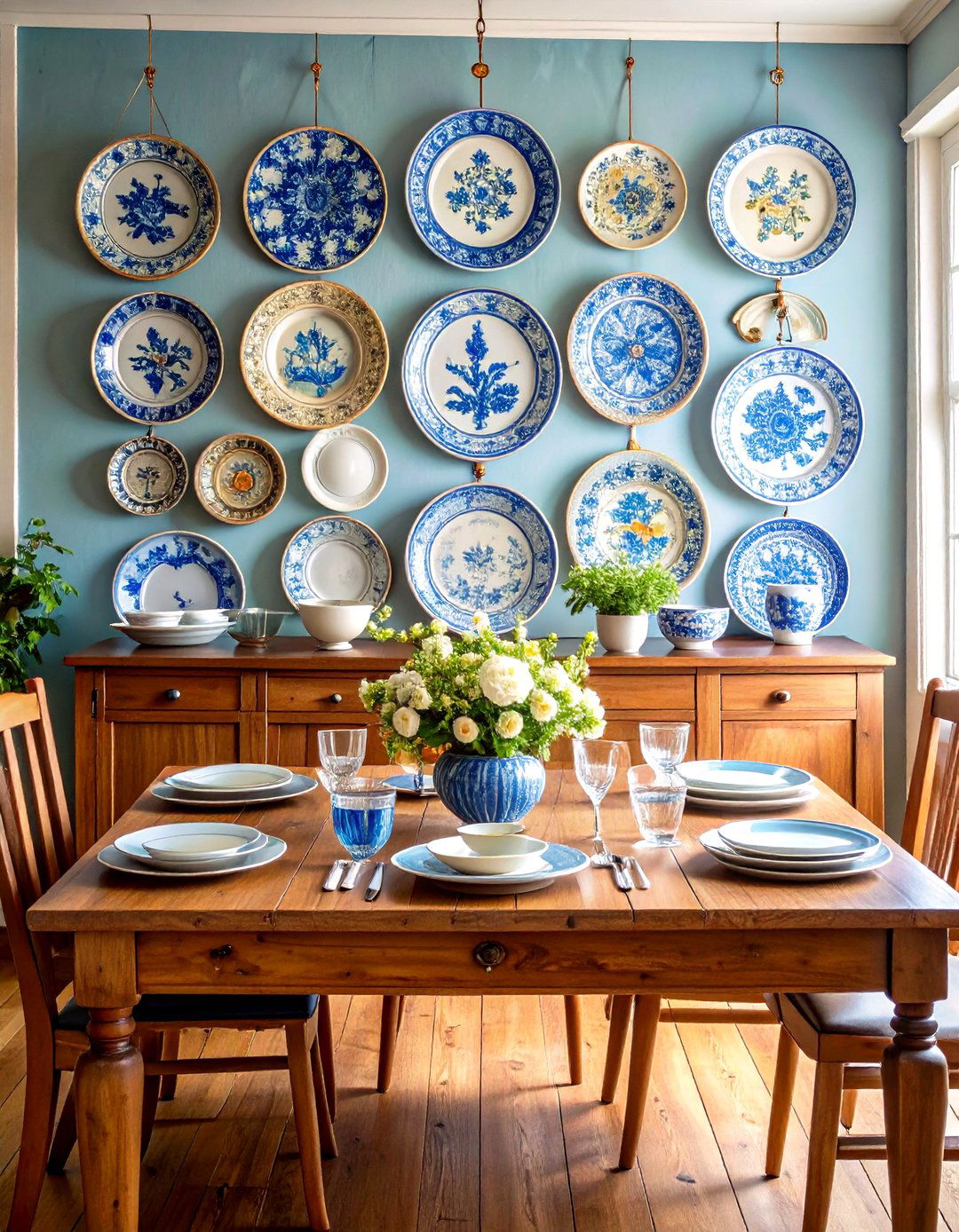
Decorative vintage plates arranged as wall art bring color, pattern, and a nostalgic feel to the dining room. Mix and match china patterns—blue-and-white transferware, floral plates, and gilt-edged dessert plates—on a feature wall. Arrange them in a grid or organic cluster above a sideboard or buffet. For depth, use plate hangers that tilt the plates slightly away from the wall, casting soft shadows. Coordinate the wall display with matching table settings for a cohesive theme. To avoid appearing too busy, keep surrounding décor minimal: a simple wooden frame mirror or a monochromatic vintage poster balances the look.
7. Style with Vintage Milk Glass
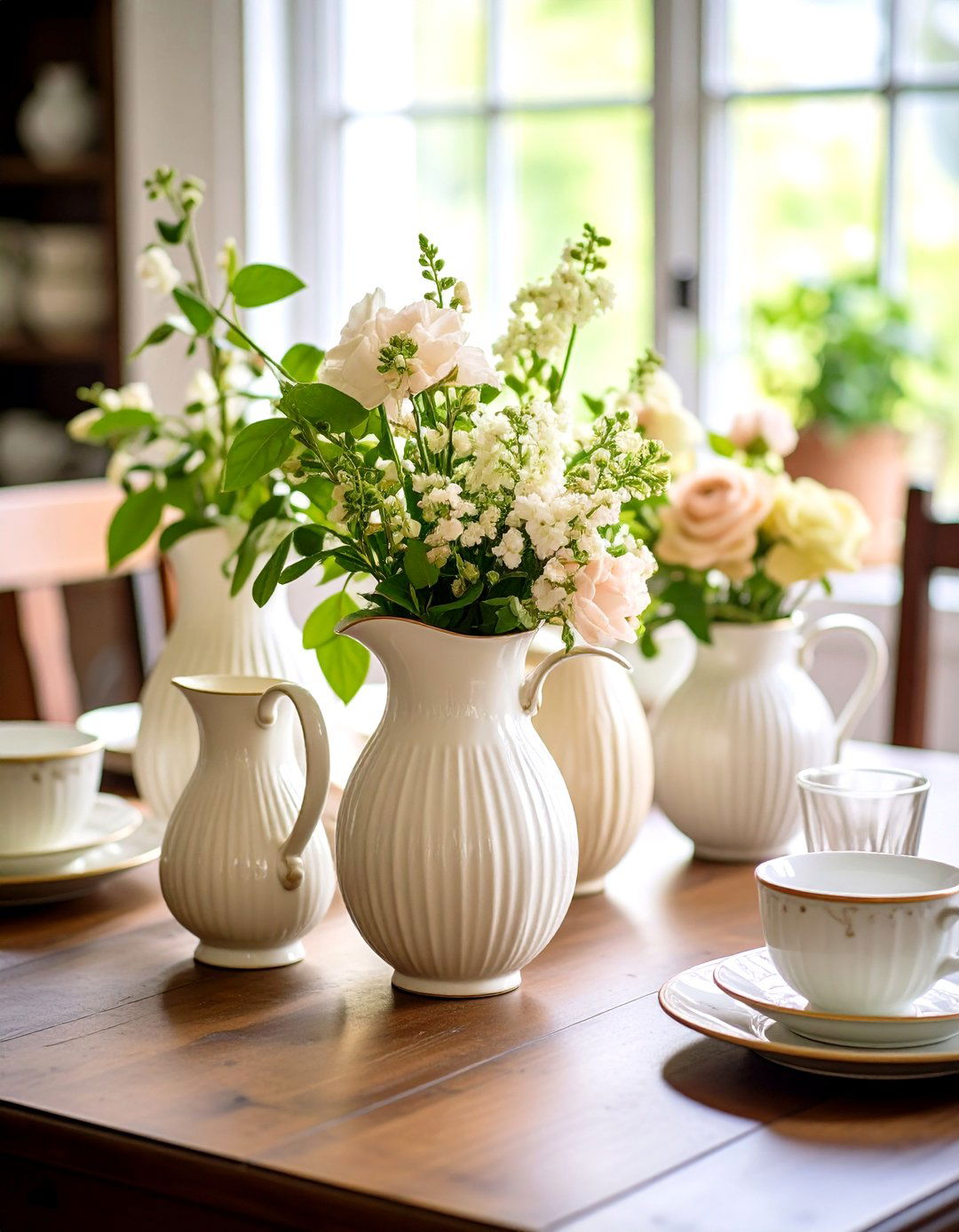
Milk glass, prized for its creamy, opaque finish and hobnail textures, adds delicate elegance when displayed in dining rooms. Gather pitchers, vases, and compotes at thrift stores or flea markets, then cluster them on open shelving or a glass-front cabinet. Use milk glass vessels as centerpieces—filled with fresh or dried flowers—or sprinkle smaller pieces among other tabletop accents. The white glass complements both farmhouse whites and richer palettes alike. To highlight its texture, pair milk glass with dark wood surfaces or painted black shelves for dramatic contrast.
8. Source Thrifted China and Artwork

Curate a personalized dining room by collecting vintage china patterns and original artwork from thrift stores and estate sales. Look for Spode, Wedgwood, or hand-painted porcelain dinnerware that can be displayed on open shelving or used for special occasions. Frame found paintings or prints in mismatched antique frames to add gallery-like interest on a focal wall. Combine these elements with rustic wooden furniture to balance the refined and the rustic. Thrifted finds inject character and story, and rotating pieces seasonally keeps the décor fresh without significant expense.
9. Choose Velvet Upholstered Chairs
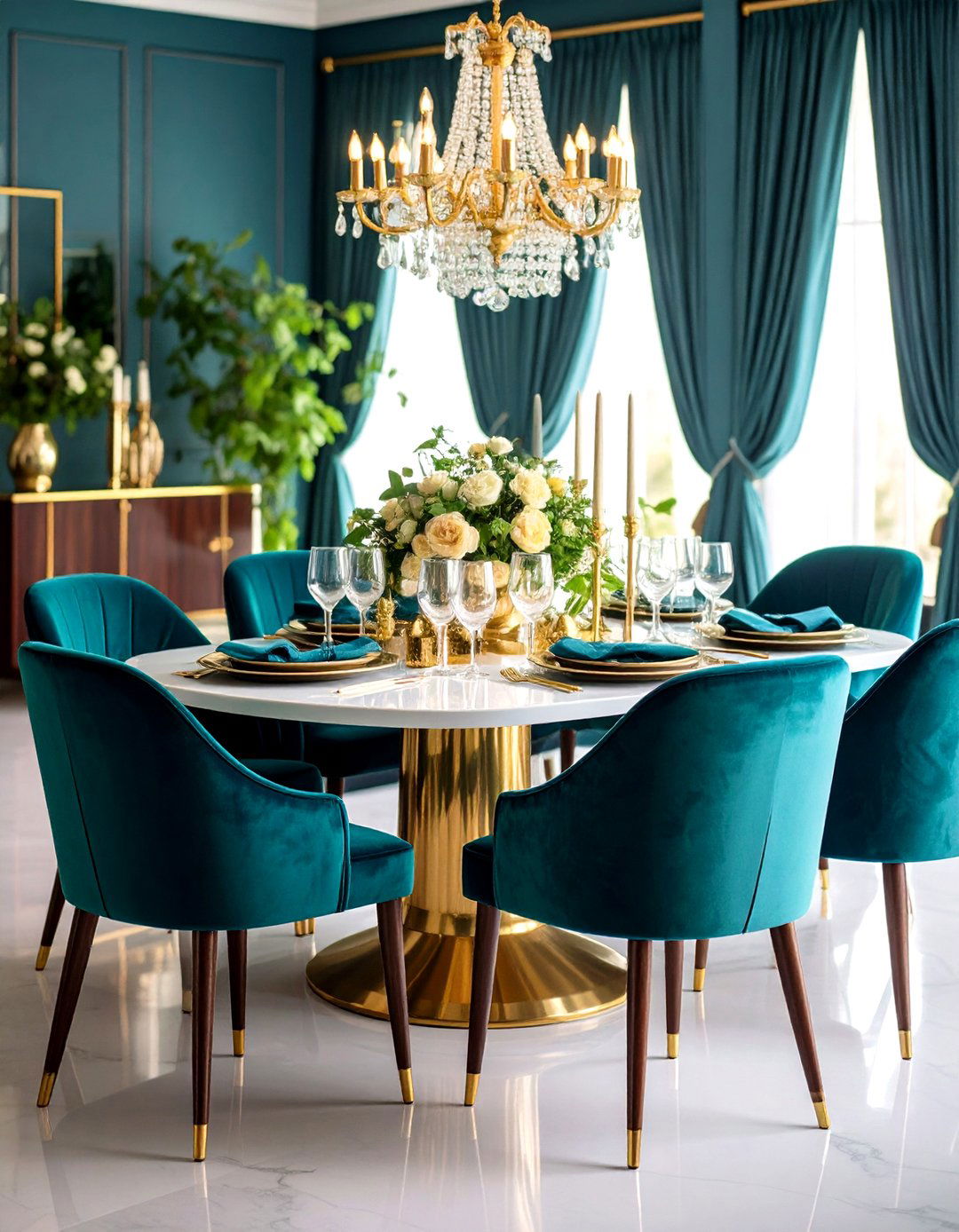
Velvet dining chairs in jewel tones—emerald green, sapphire blue, or ruby red—bring retro glamour and luxurious texture to vintage spaces. Opt for midcentury silhouettes with clean lines to avoid overwhelming the room. These chairs pair beautifully with a simple wood or marble-top table. To harmonize the palette, incorporate accent pillows or drapes in coordinating hues. Metallic accents—brass candle holders or gold flatware—enhance the opulent feel. Velvet also provides a comfortable seating experience, making it ideal for long dinner parties.
10. Introduce Iconic Tulip Tables
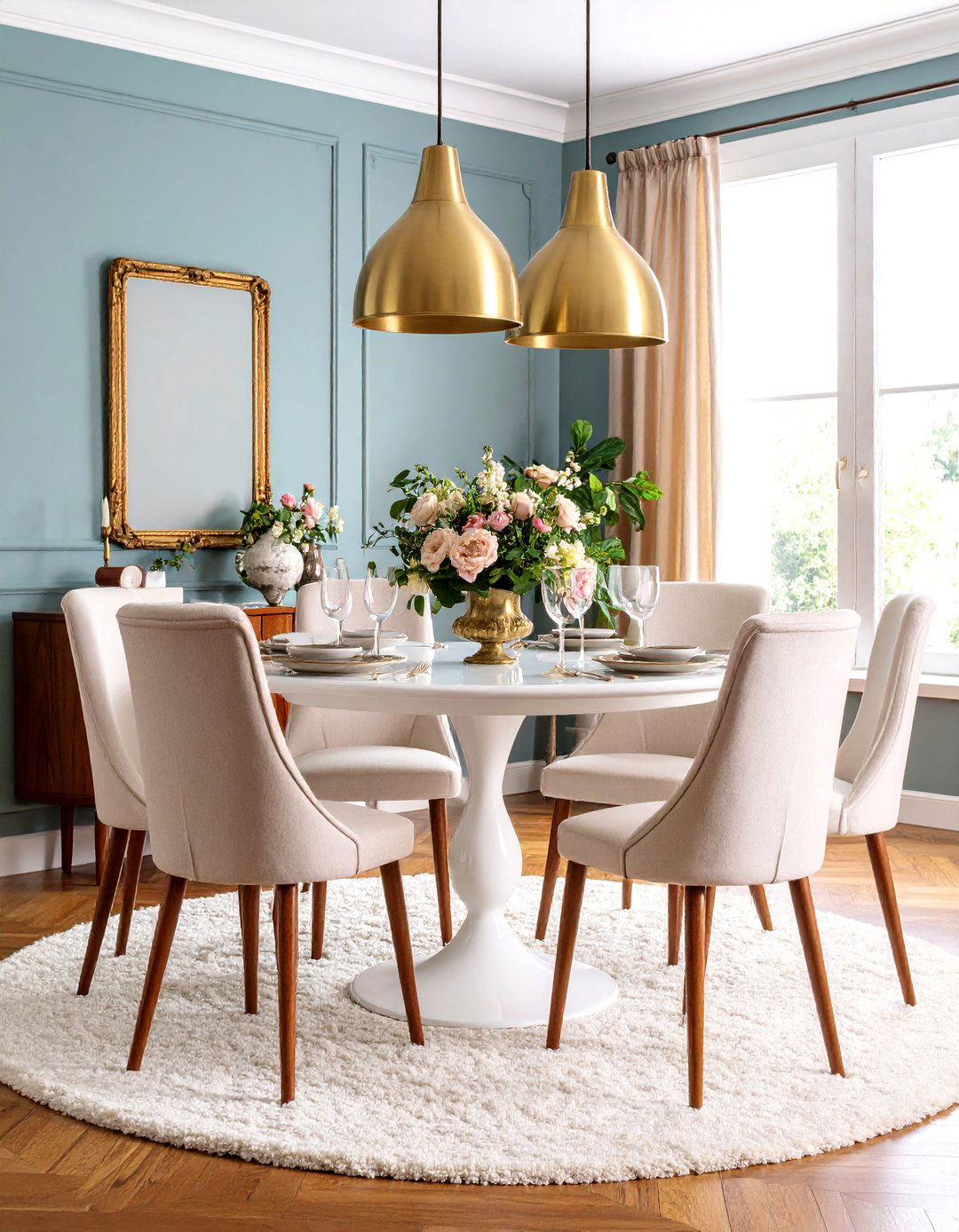
The tulip dining table, designed by Eero Saarinen, offers a streamlined retro silhouette that complements vintage décor with modern flair. Its pedestal base frees up leg room while providing a sculptural centerpiece. Pair it with contrasting chairs—such as vintage bentwood seats or velvet-upholstered midcentury chairs—to create an eclectic mix. For warmth, layer a soft rug underneath and add a cluster of brass or glass pendant lights above. The tulip table’s timeless shape bridges the gap between 1950s modernism and antique surroundings.
11. Incorporate Plush Shag Rugs
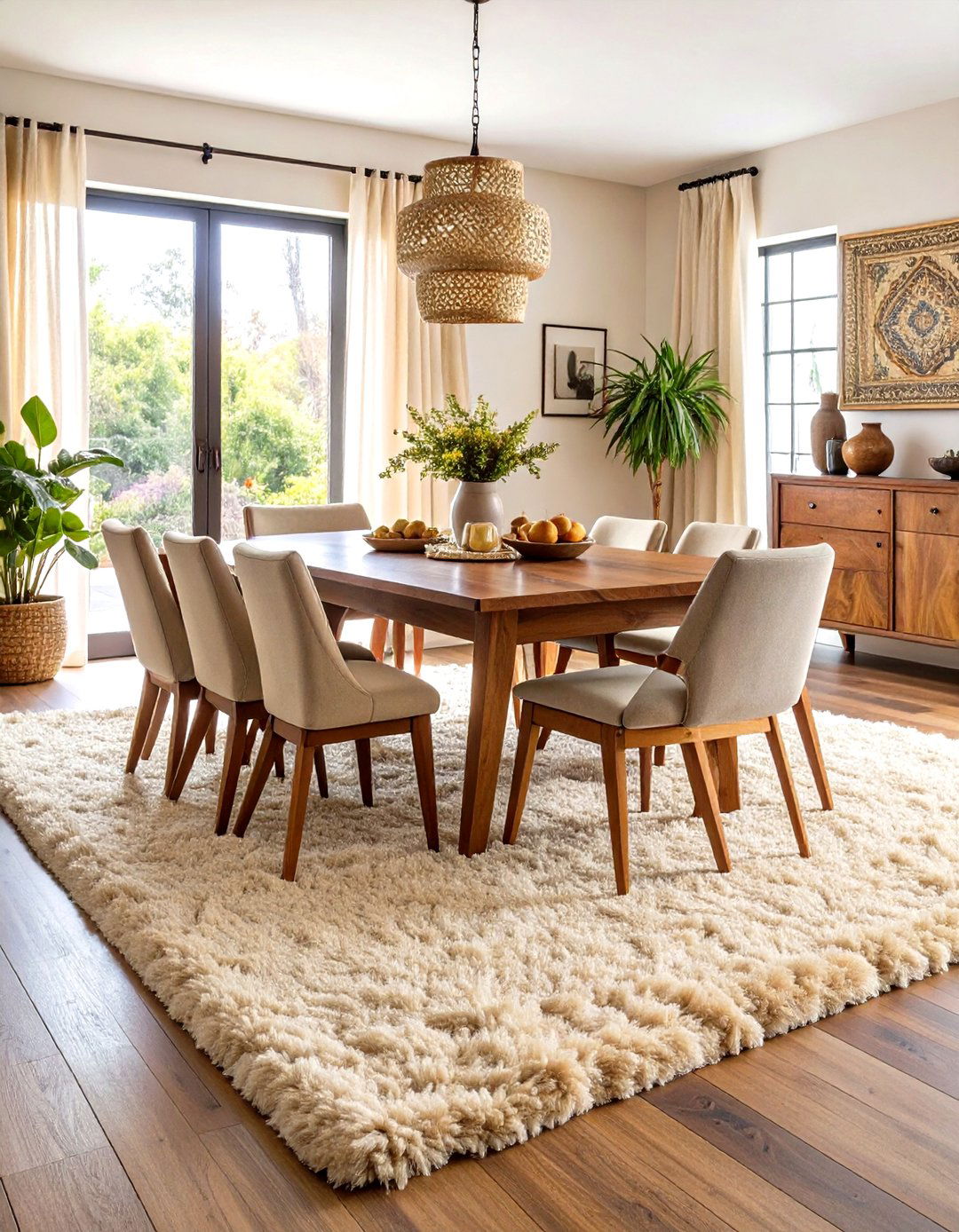
A plush shag rug under the dining table anchors the room and introduces period-appropriate texture and warmth. Choose natural wool in neutral tones—or go bold with vintage Persian patterns—for visual interest. Ensure the rug is large enough for chairs to remain on the rug even when pulled out. The soft pile contrasts beautifully with hard surfaces like wood and metal. To protect the rug, select one with a durable weave and consider rotating it periodically. Pair with simple table linens to let the floor covering shine.
12. Add Psychedelic or Floral Wallpaper
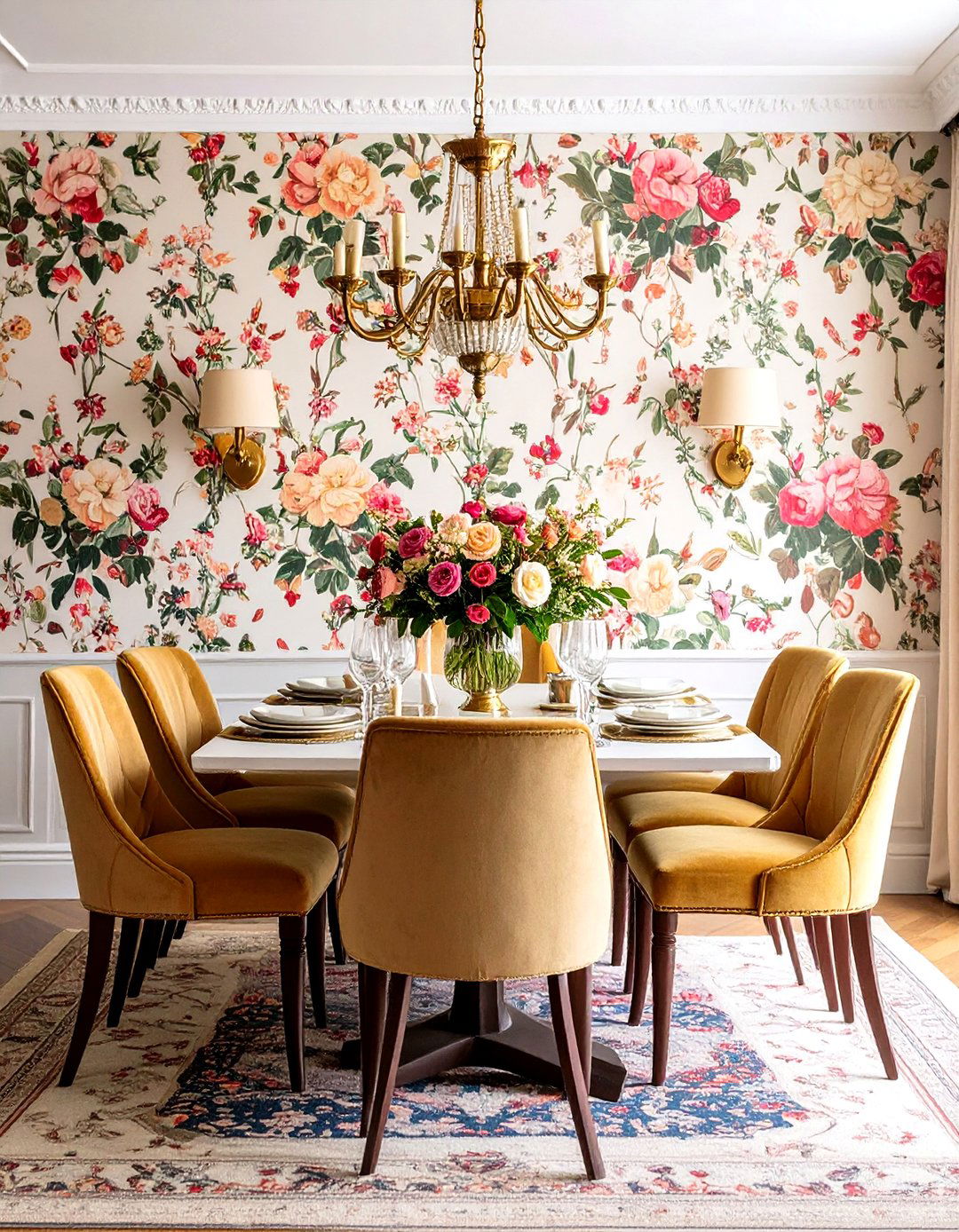
Bold psychedelic patterns or vintage floral wallpaper on an accent wall create instant retro ambiance. Choose a single statement wall to prevent the space from feeling overwhelming. Complement the print with solid-colored furnishings—such as velvet chairs or wood tables—in coordinating hues. Install period-style lighting, like a brass sconce or retro pendant, to tie the look together. If wallpaper isn’t practical, use large-scale vintage-inspired wall murals or removable wallpaper panels for a similar effect without commitment.
13. Install an Antler or Industrial Chandelier

An antler chandelier combines rustic lodge vibes with vintage charm, while industrial factory-style fixtures—such as wire cages or reclaimed factory baskets—lend an authentic period feel. These statement lights draw the eye upward and set the tone for the room’s aesthetic. For a softer look, choose whitewashed or patinated finishes. Pair antler or industrial fixtures with natural materials—linen curtains, jute rugs—and antique furniture to balance the raw edges. Position the chandelier so it hangs 30–36 inches above the table surface for optimal lighting and visual impact.
14. Incorporate a Midcentury Bar Cart

A vintage bar cart or midcentury cocktail trolley introduces both function and flair to the dining room. Stock it with crystal decanters, retro glassware, and a selection of spirits for effortless entertaining. A two-tier trolley provides space for garnishes, bar tools, and a small tray for serving. Position the cart near an entry or buffet table to keep drinks within arm’s reach. To enhance its vintage appeal, look for brass hardware, glass shelves, or designer-inspired silhouettes. Styling tip: rotate seasonal accents—fresh herbs or citrus—for a festive touch.
15. Hang an Oversized Antique Mirror
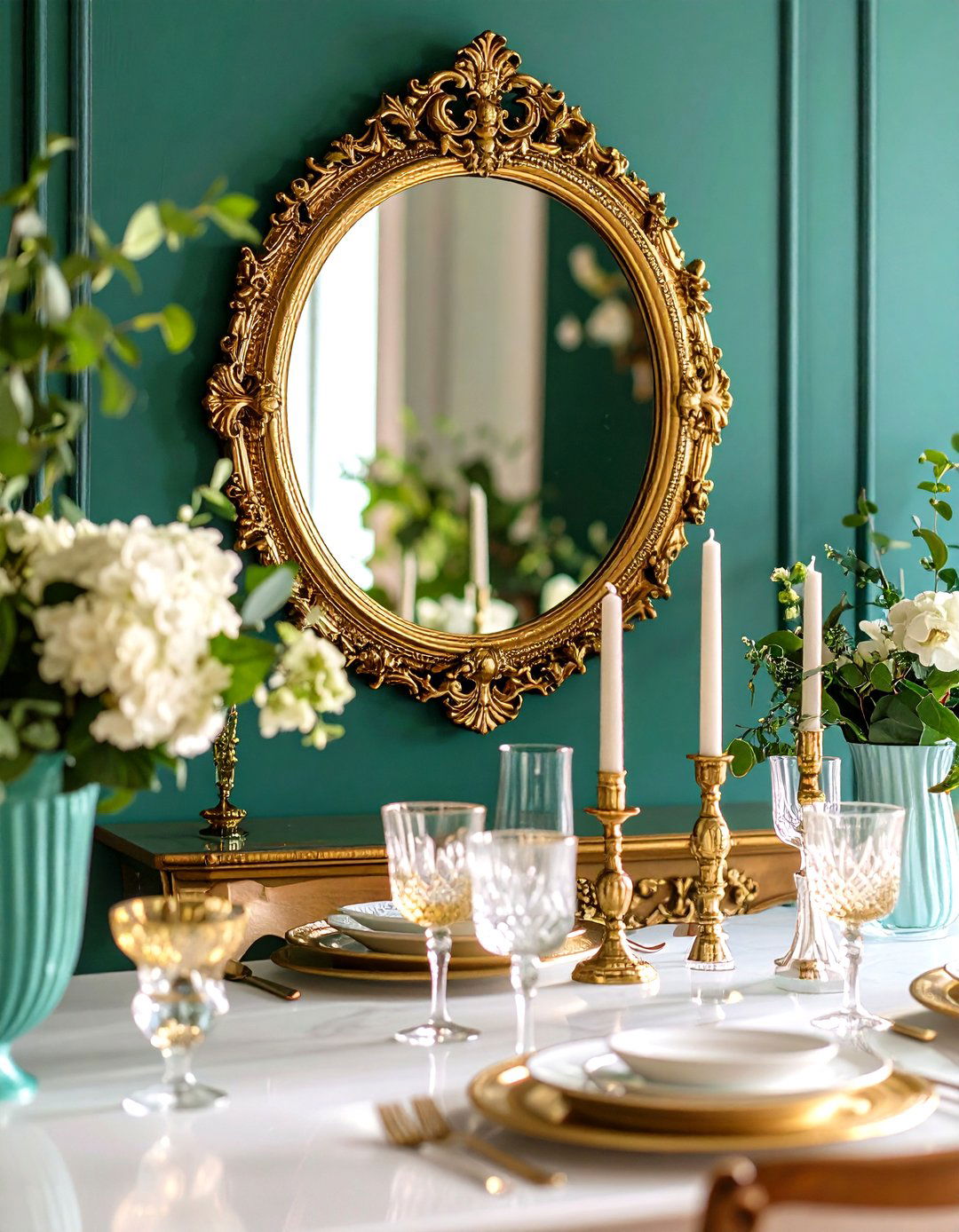
An oversized gilded or wood-framed mirror not only reflects light but also visually expands the room while nodding to antique decorative arts. Position it opposite a window to amplify natural daylight. The frame’s ornate carvings or patinated finish underscores the vintage aesthetic. Layer smaller decorative items—candlesticks, milk glass vases—on a console beneath the mirror to create a styled vignette. Mirrors also provide practical function, allowing guests to view the entire room and feel more connected during gatherings.
16. Include Vintage Textiles and Table Linens
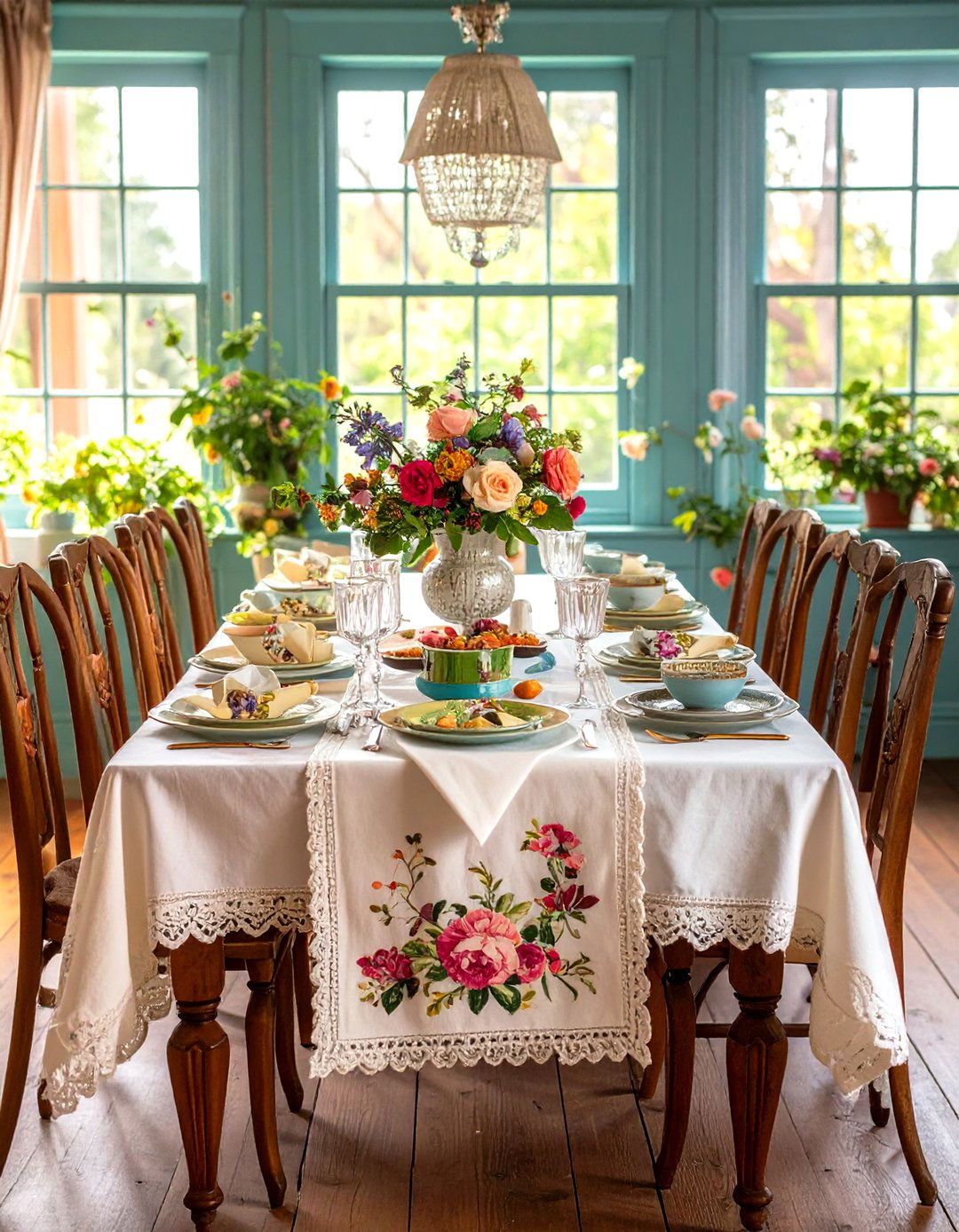
Embroidered tablecloths, lace runners, and patterned vintage textiles add authenticity and texture to your dining setup. Incorporate linen tea towels or hand-embroidered napkins for a homemade touch. Mix and match fabrics—floral prints with simple stripes—to achieve a collected-over-time look. Store linens in a nearby cabinet or buffet, folded neatly and on display, to reinforce the décor theme. Seasonal rotations—autumnal hues in fall, pastel florals in spring—keep the space feeling fresh and dynamic.
17. Create a Vintage Clock Gallery Wall
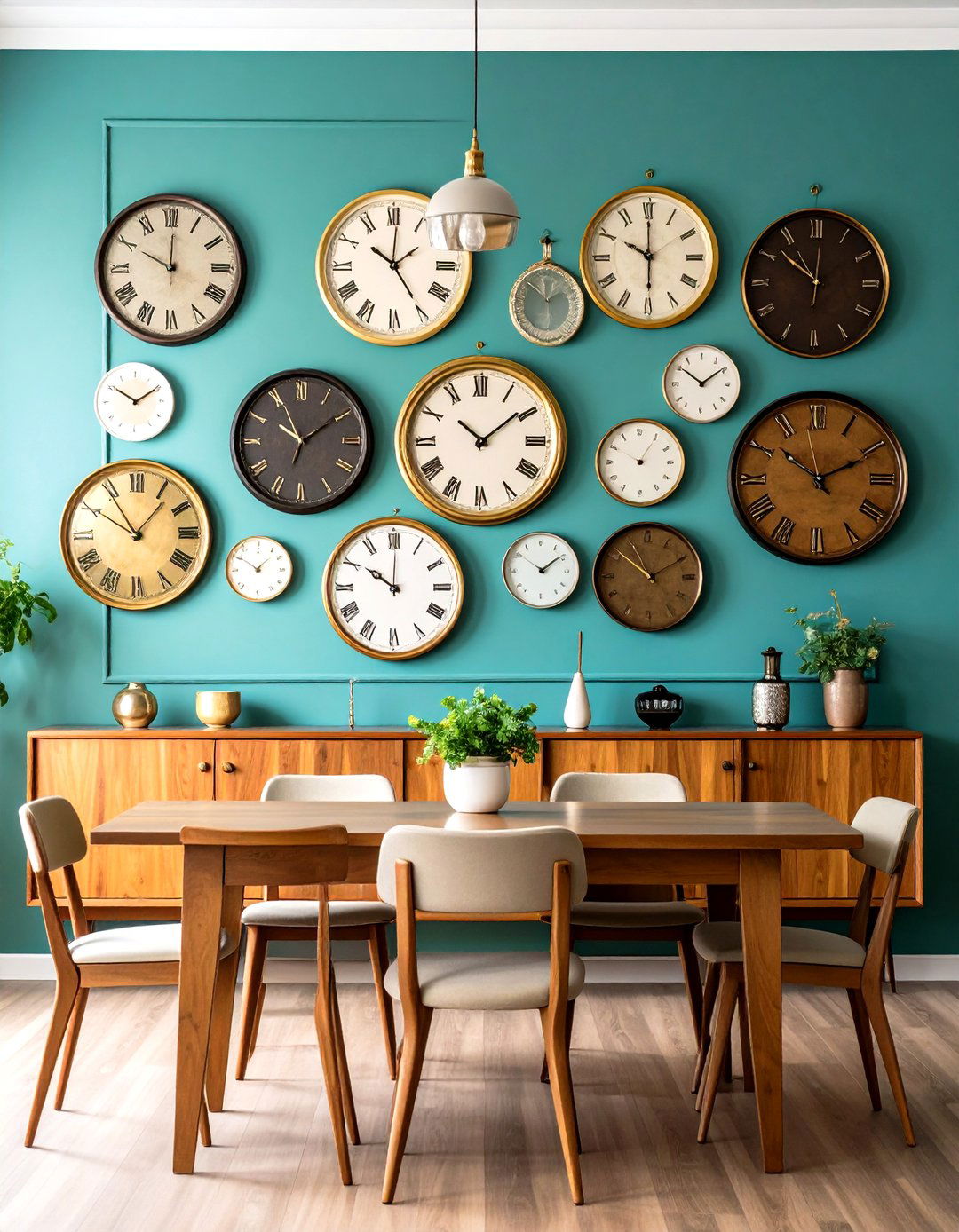
A gallery wall of vintage clocks adds functional art and nostalgic interest to dining rooms. Combine different shapes, sizes, and finishes—brass, wood, ceramic—across the space above a sideboard or console. Arrange clocks asymmetrically for an organic, collected feel. To ensure cohesion, limit your palette to two or three complementary tones. This display serves as a conversation starter while reinforcing the theme of measured time and shared meals.
18. Adopt a Pastel Color Palette
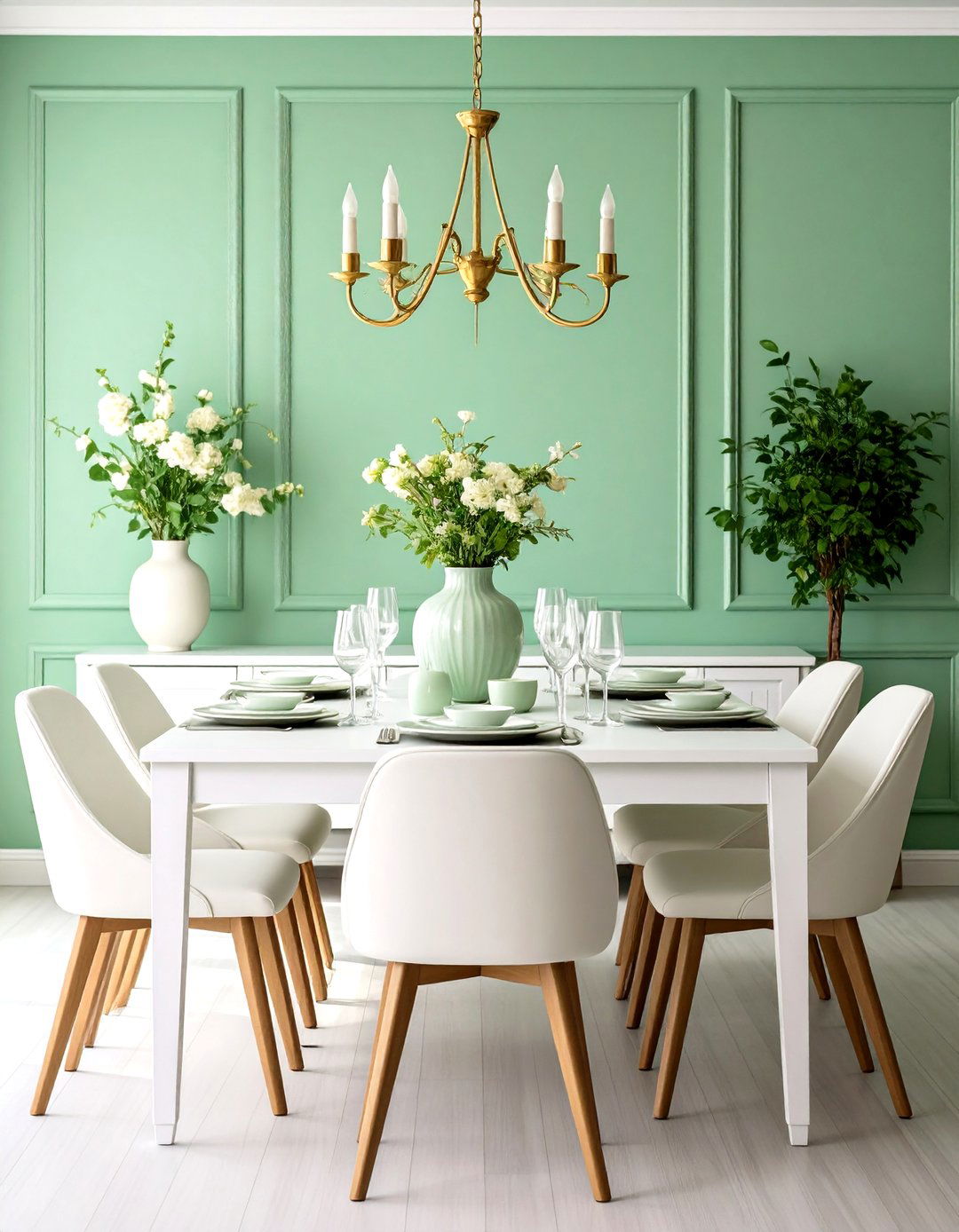
Soft pastel walls—mint green, pale pink, or powder blue—create a sweet, romantic backdrop ideal for shabby chic or cottage-inspired dining rooms. Keep trim and moldings crisp white to define architectural details. Furnish with whitewashed or distressed pieces, then layer in pastel-hued accents—ceramic vases, upholstered chairs, floral textiles—to maintain a cohesive look. Pastels also pair beautifully with brass or crystal light fixtures, adding a refined vintage elegance without feeling overly saccharine.
19. Hang a Crystal Chandelier
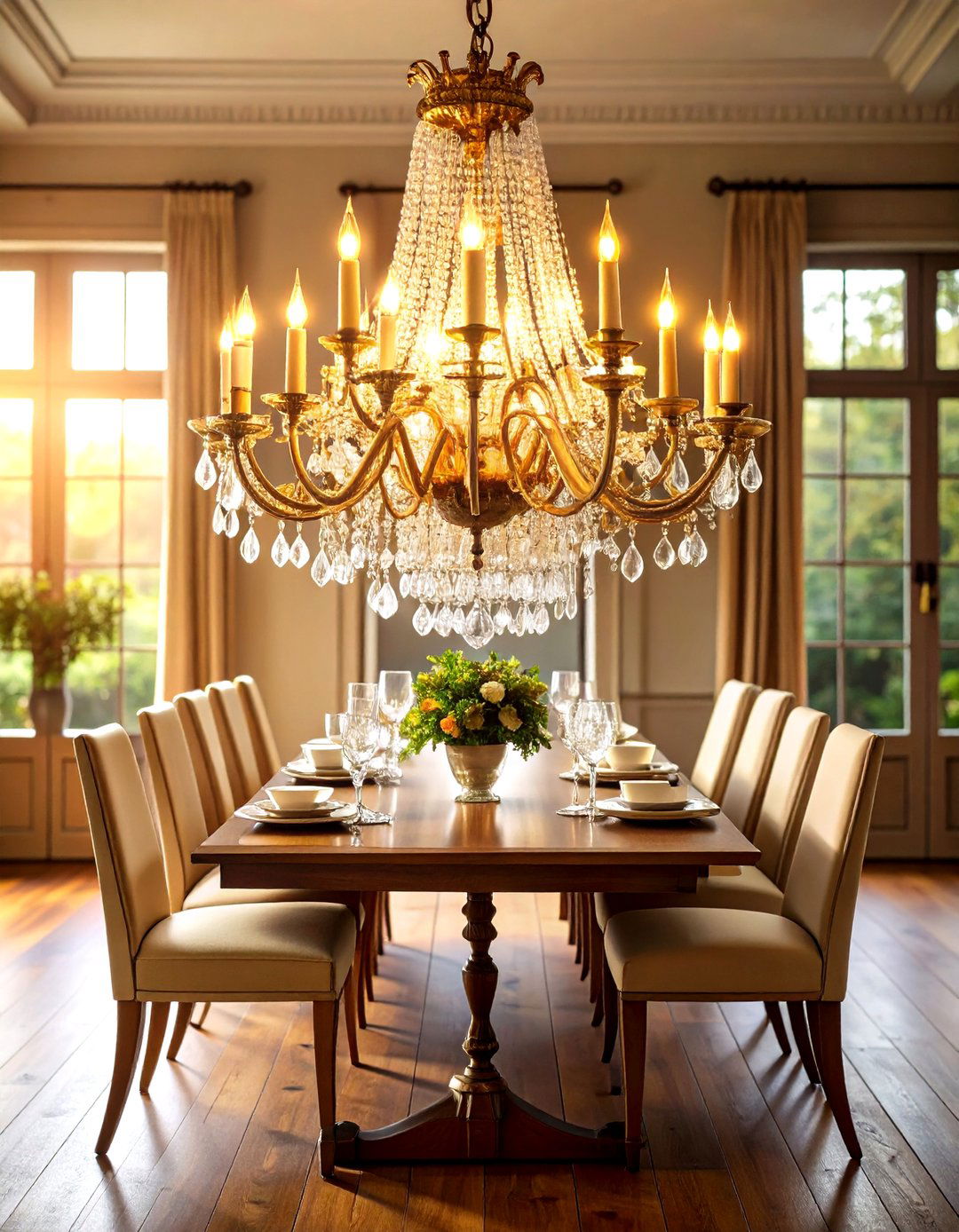
A crystal chandelier exudes timeless elegance and immediately elevates a dining room’s vintage credentials. Look for fixtures with multi-faceted prisms and aged brass or patinated metal arms. The shimmering crystals reflect candlelight or bulbs, casting a warm, inviting glow. Position the chandelier centrally over the table, ensuring it’s scaled correctly for room size—generally 20–24 inches in diameter for a standard dining room. Pair with simple furniture silhouettes to let the fixture take center stage.
20. Build a Window Seat with Vintage Textiles
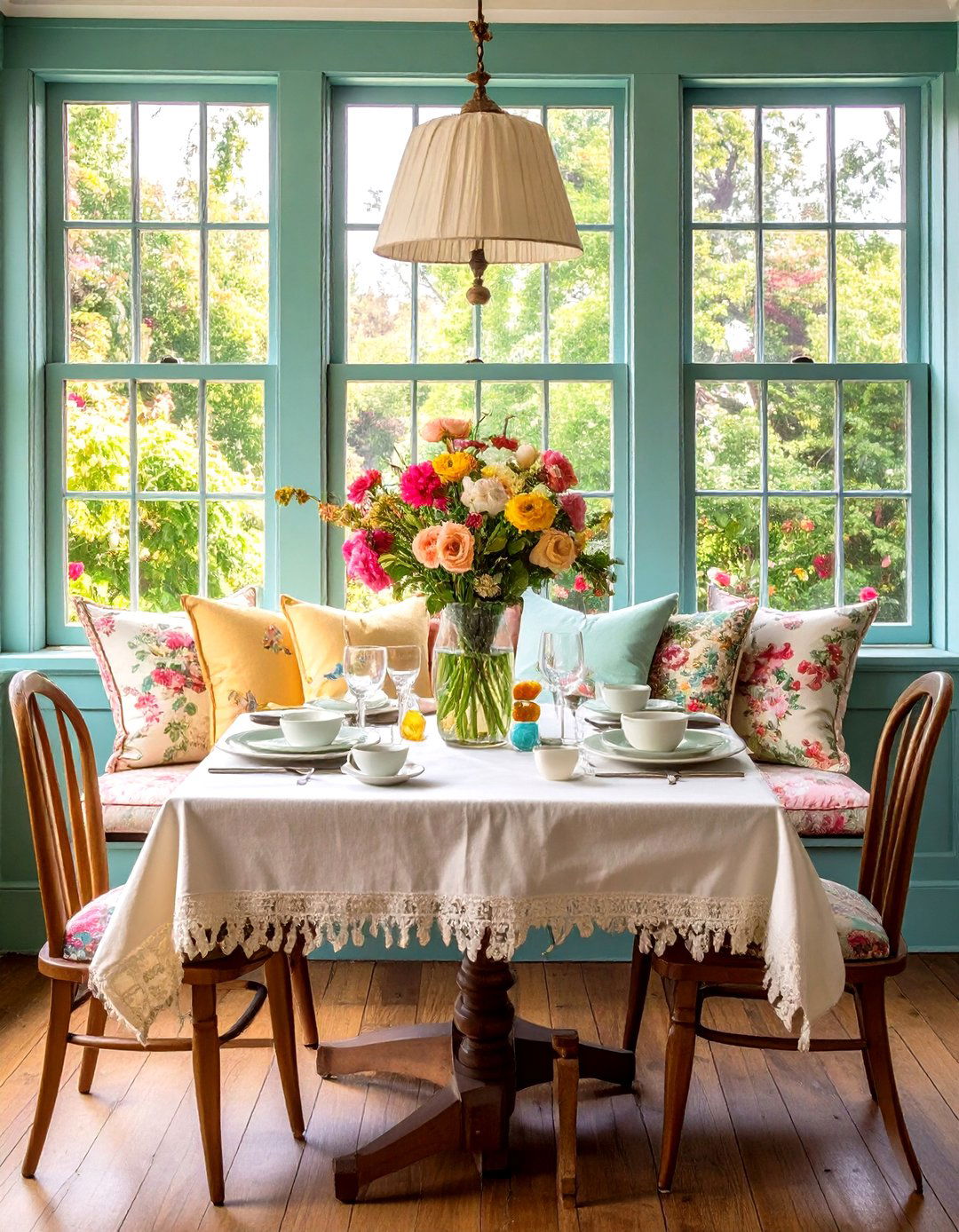
A built-in window seat dressed with patterned pillows and lace-trimmed cushions creates a cozy vintage nook adjacent to the dining area. Use antique-inspired fabrics—floral chintz, ticking stripes—to upholster the bench. Complement with a small side table for tea or display space for a vintage lamp. This seating option not only adds charm but also provides extra room for guests and a delightful spot for morning coffee. Incorporate shuttered windows or lace curtains to reinforce the period look.
Conclusion:
Vintage dining rooms succeed by thoughtfully blending antiques, period-inspired lighting, and curated thrift finds to reflect personal taste and historical charm. From distressed wood tables and opaline glass pendants to velvet upholstery and pastel walls, each element contributes to a cohesive narrative of the past. Embrace eclecticism—mix eras and styles—for spaces that feel authentic and curated rather than staged. Whether you opt for Victorian elegance, midcentury simplicity, farmhouse warmth, or retro vibrancy, these 20 ideas offer a roadmap to creating a dining room that’s both inviting and timeless.


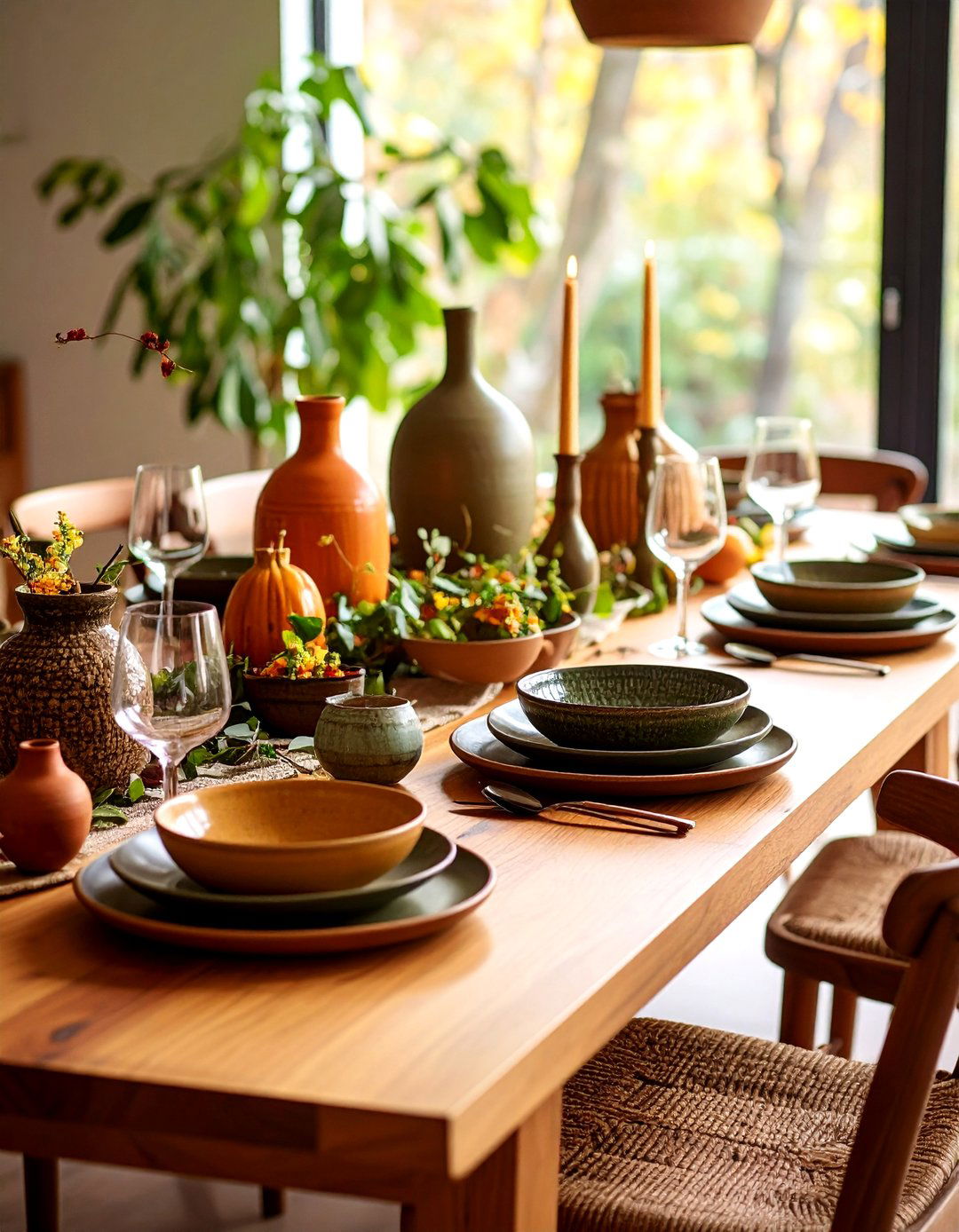

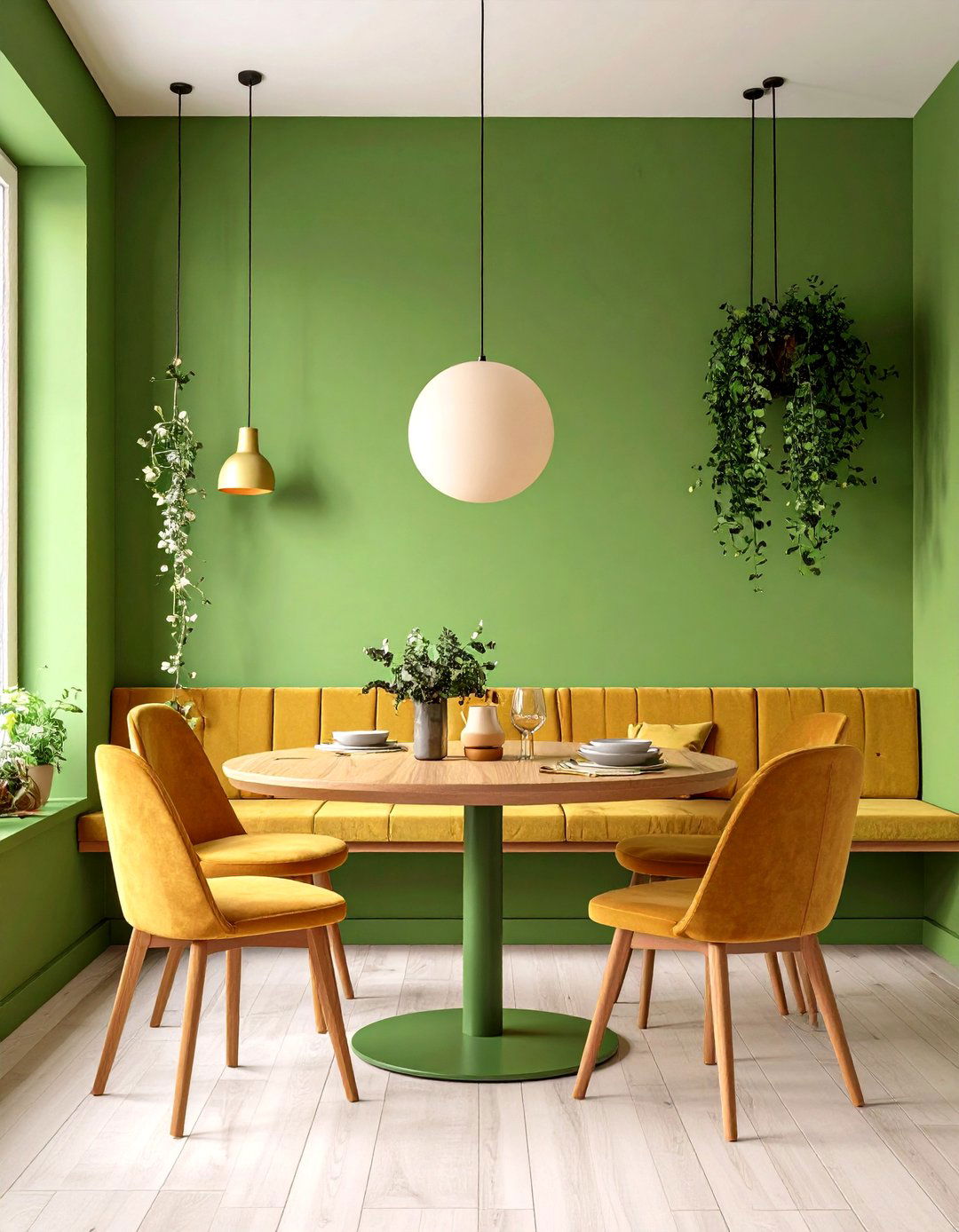
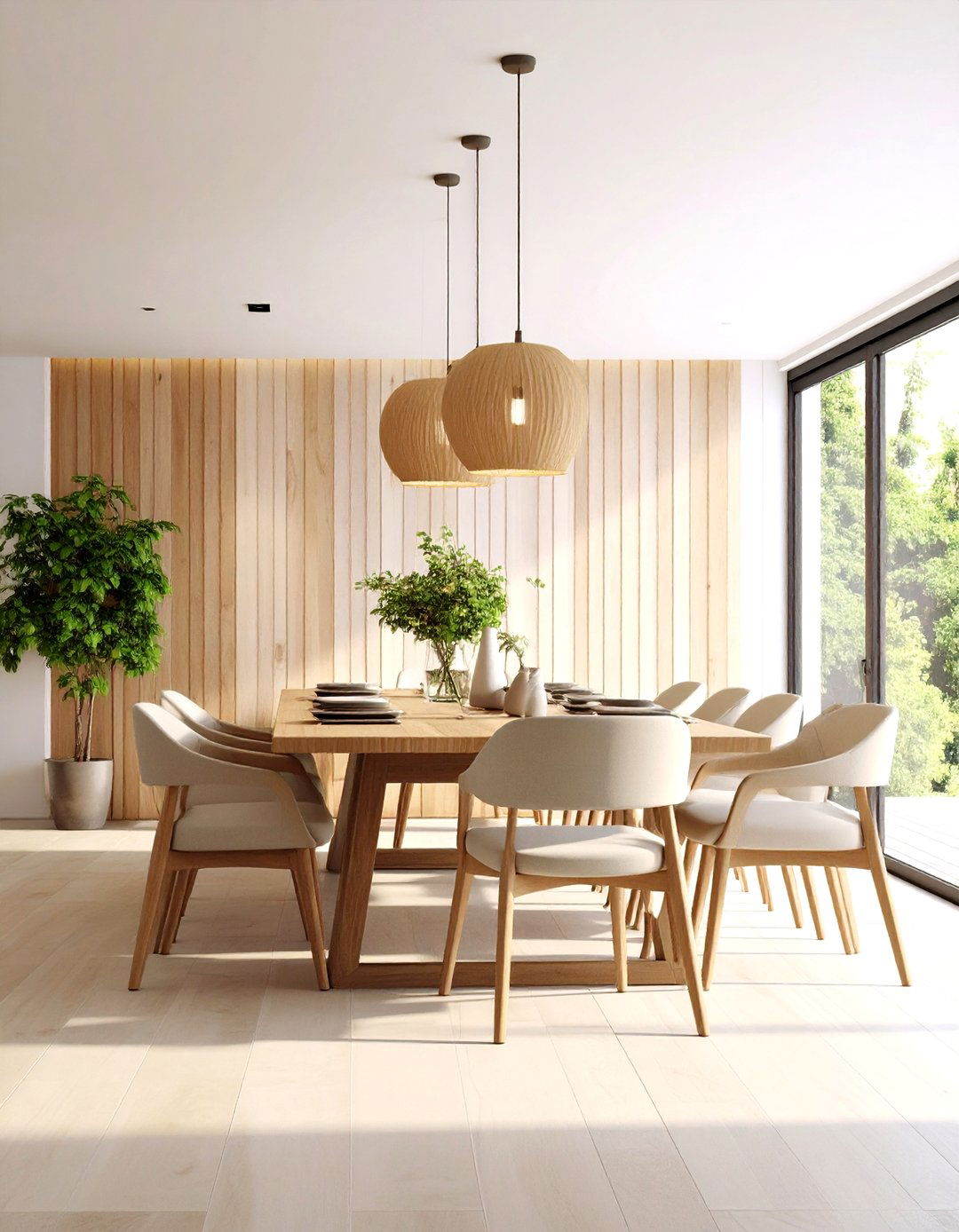

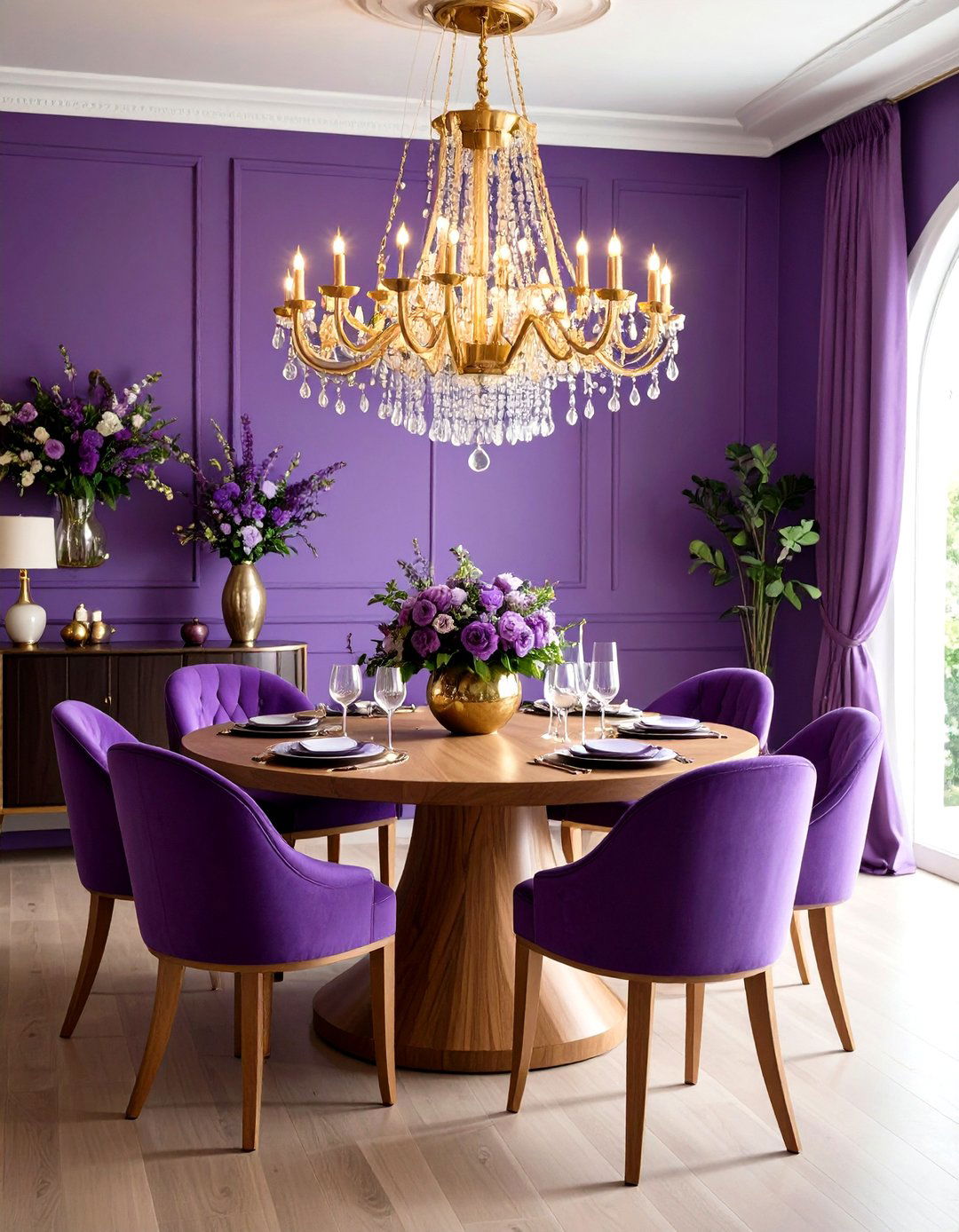
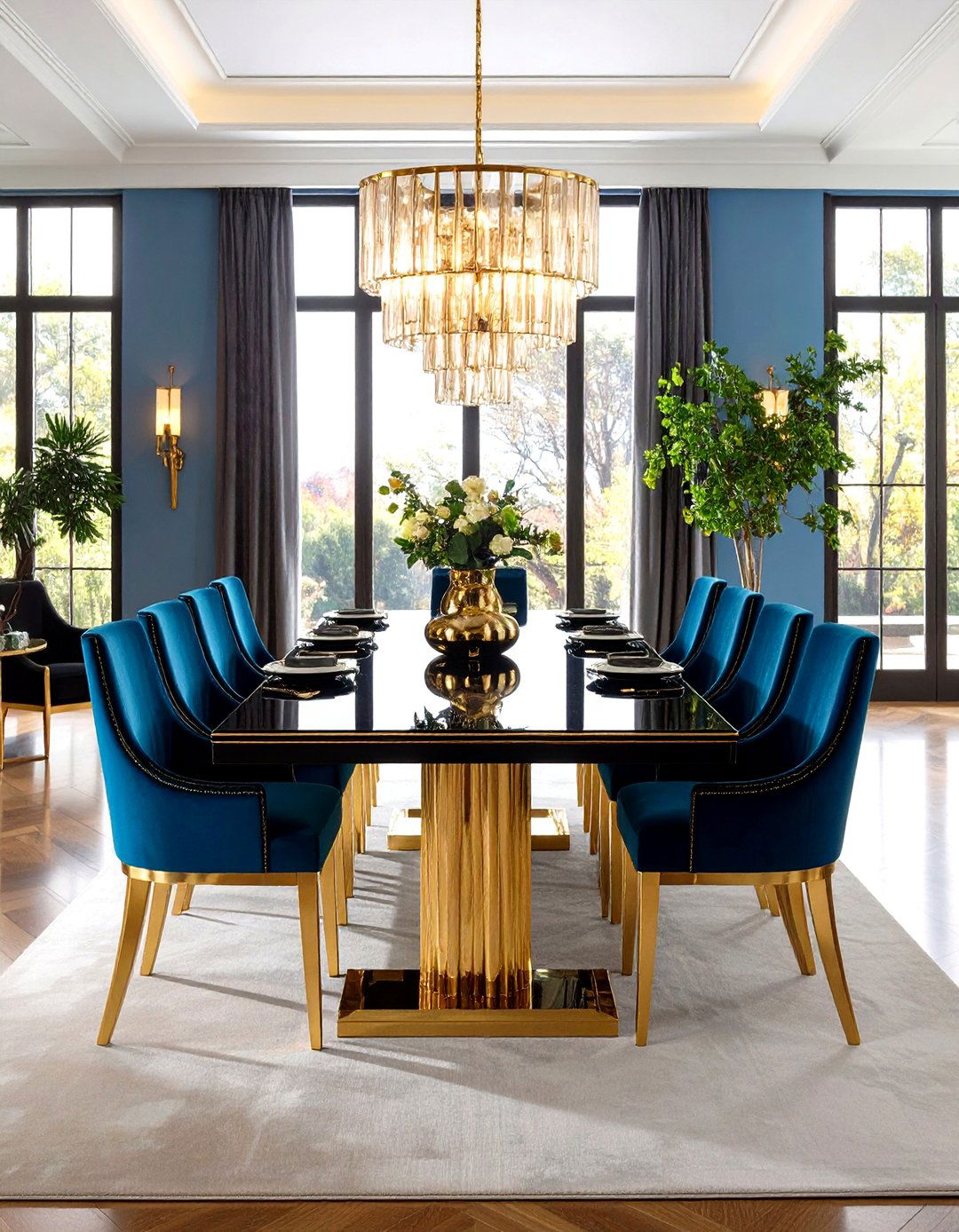
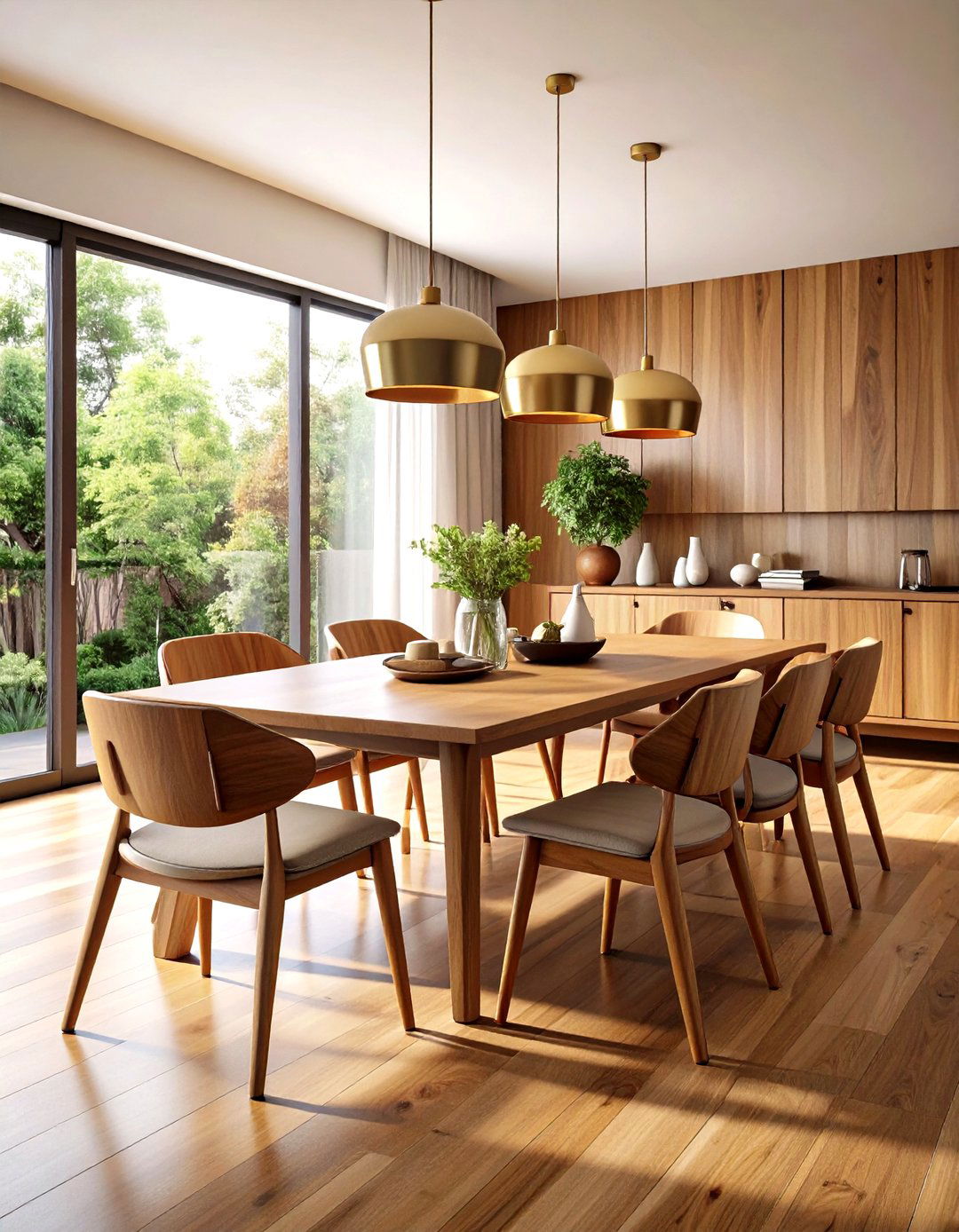

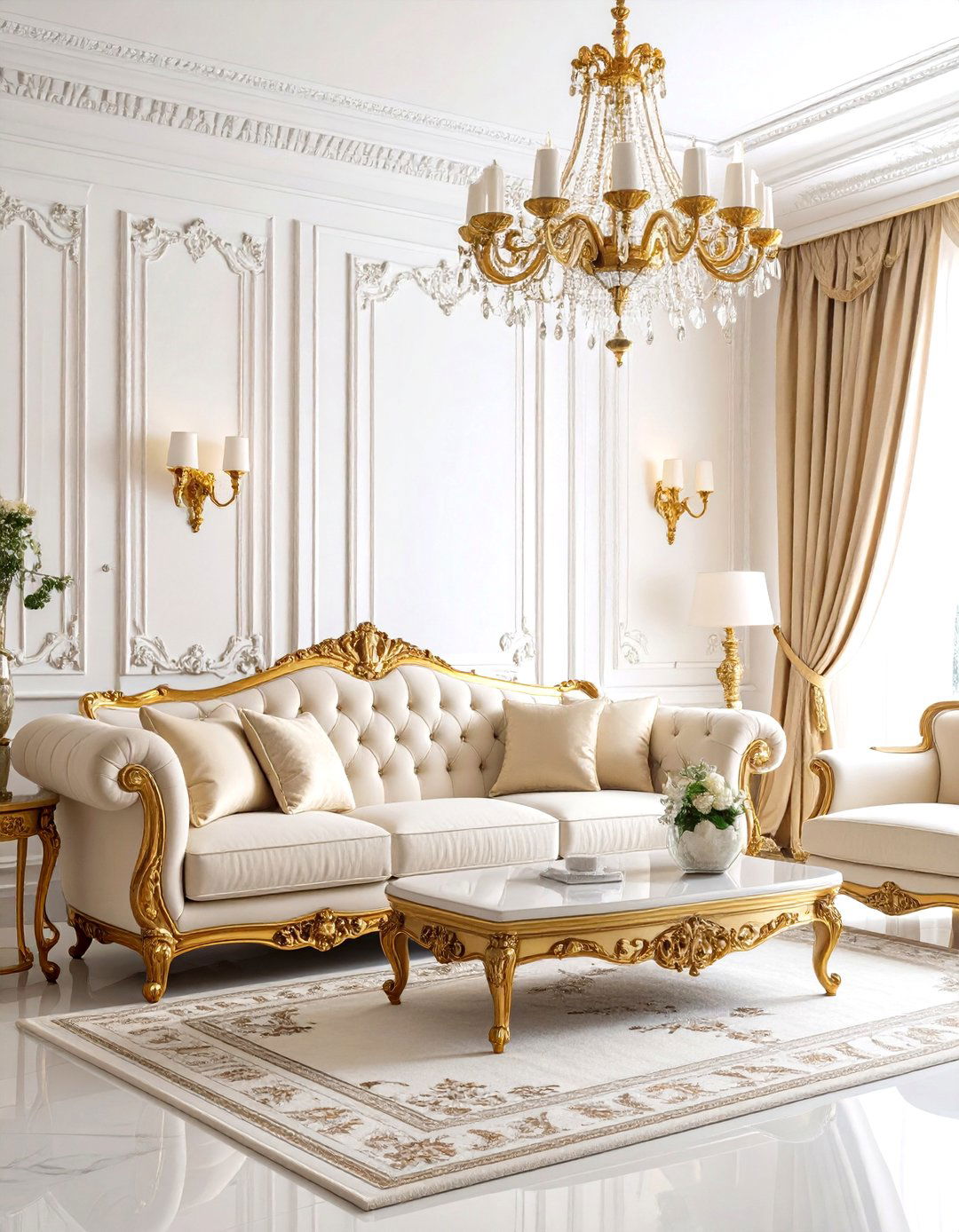
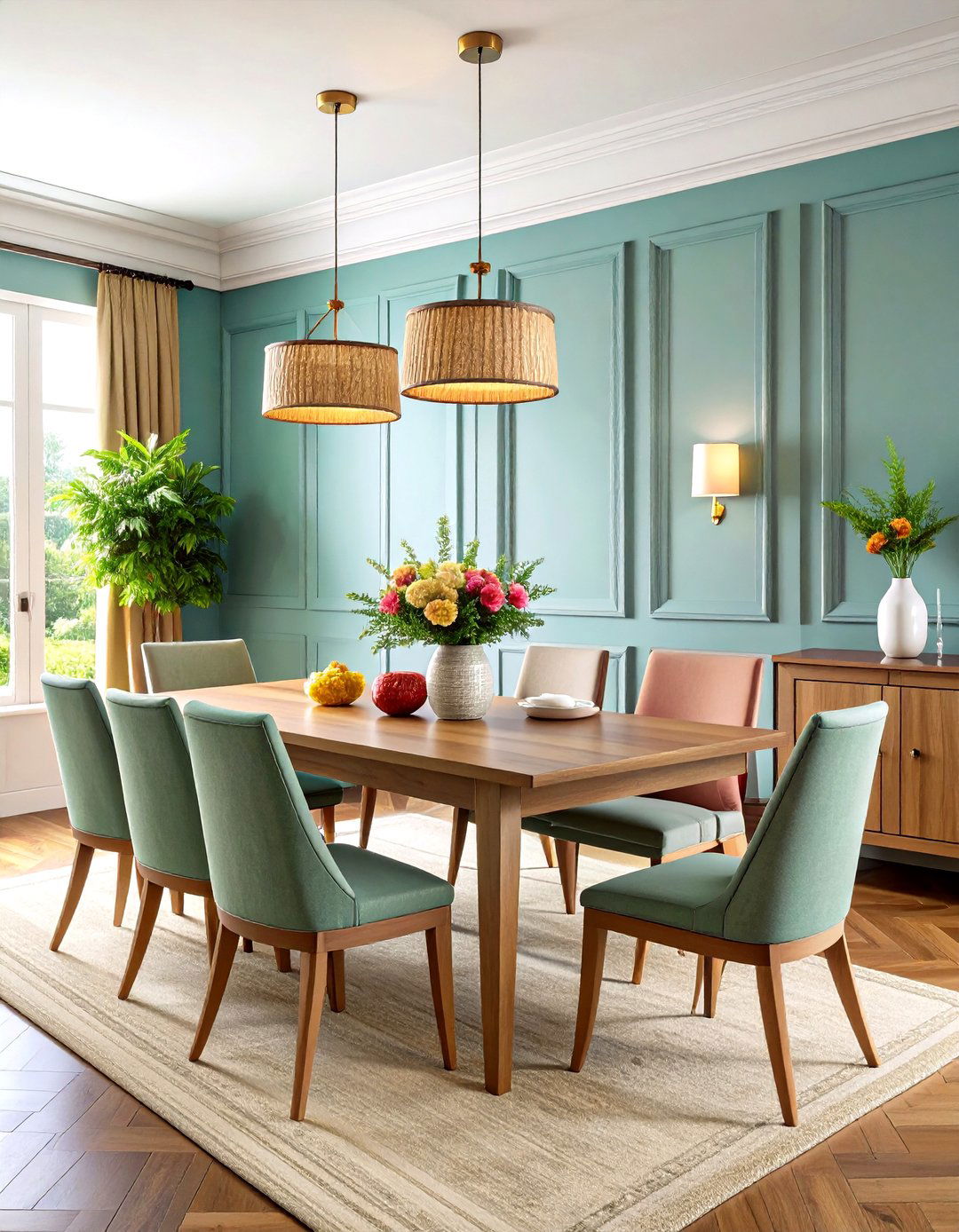
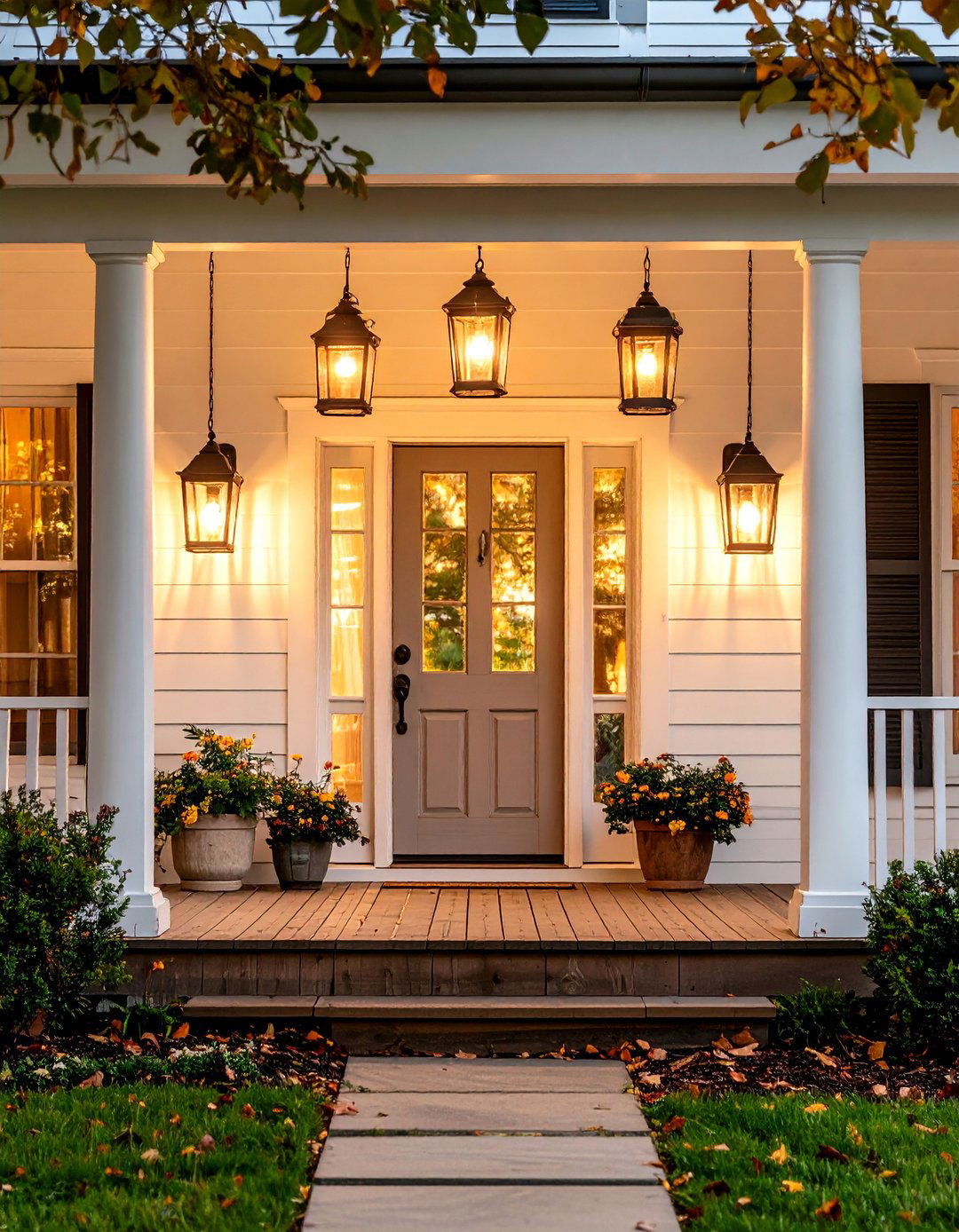
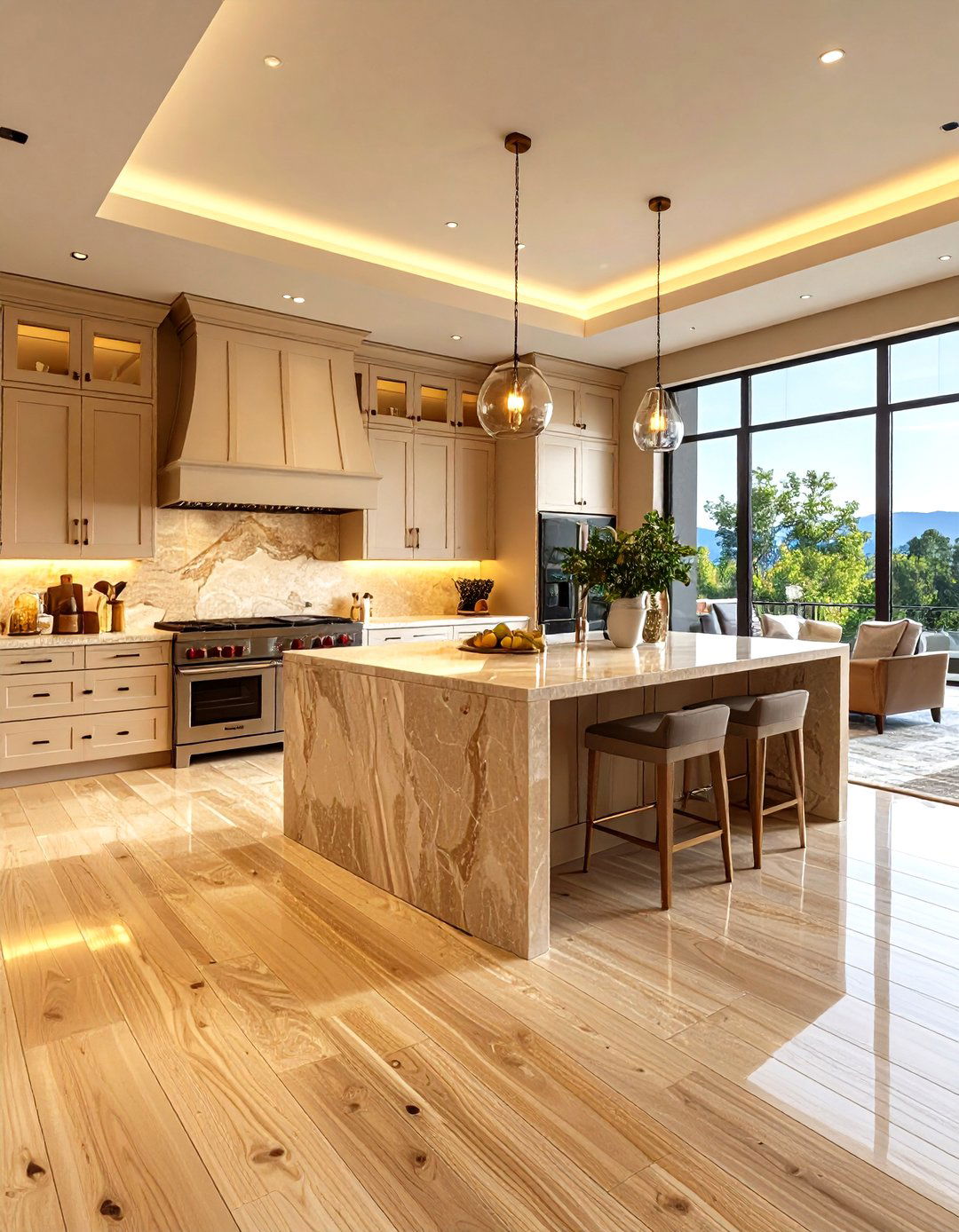
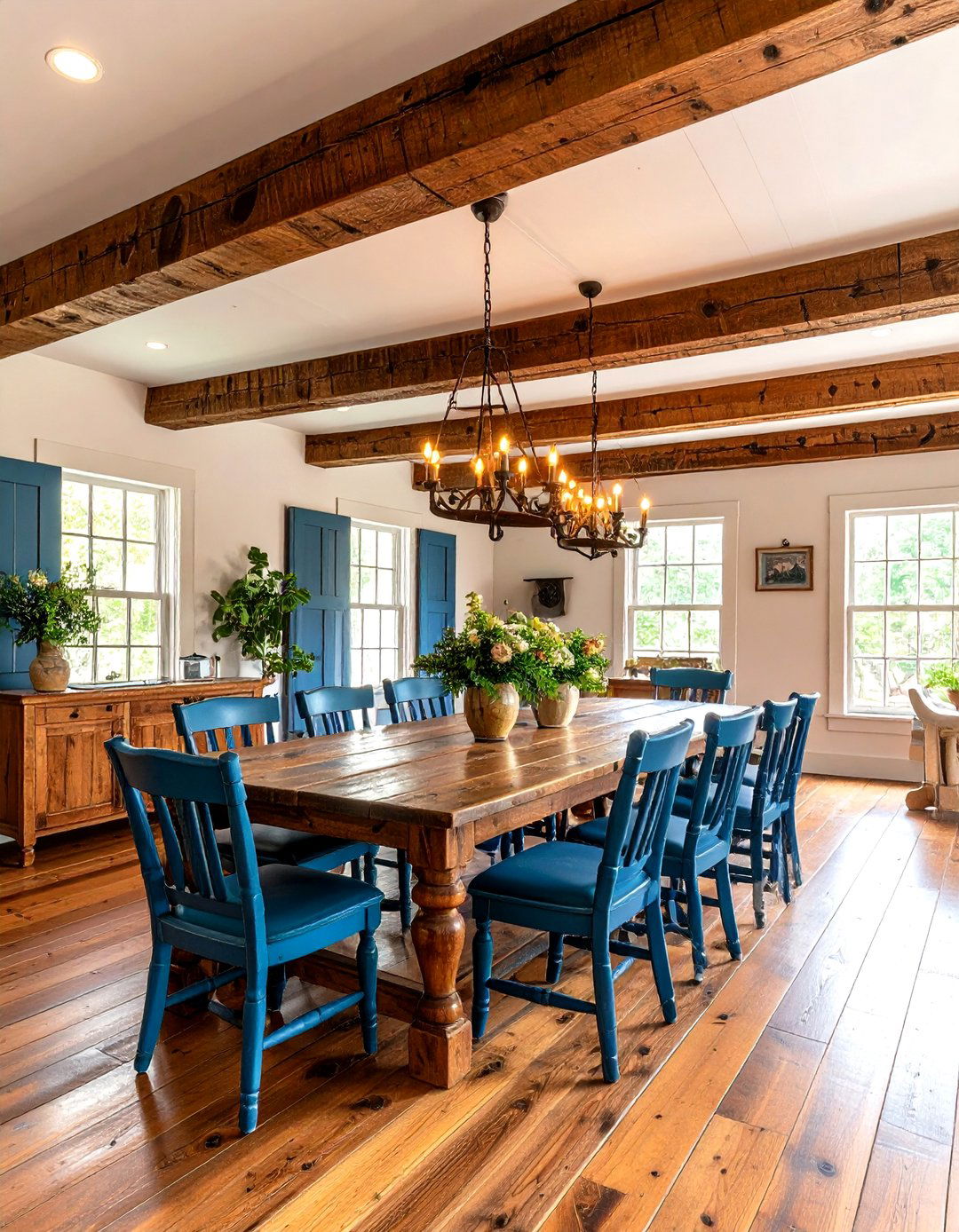
Leave a Reply